Sony WH-1000XM3 Bluetooth Headphone Review – STILL the King of Noise-Canceling
(0) - (0)
Sony WH-1000XM3 - 2018.09.19
#sony
#wh-1000xm3
#noiseCanceling
#Bluetooth
#Headphone
Sony WH-1000XM3
View
View AMP
Sony WH-1000XM3 Bluetooth Headphone Review – STILL the King of Noise-Canceling
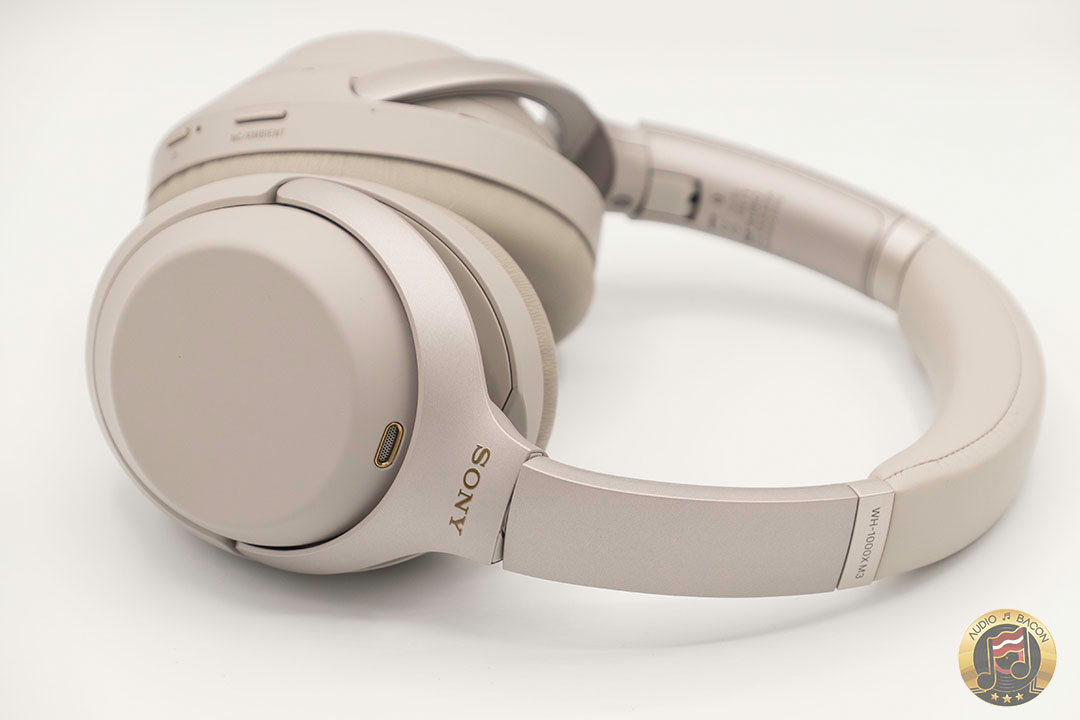
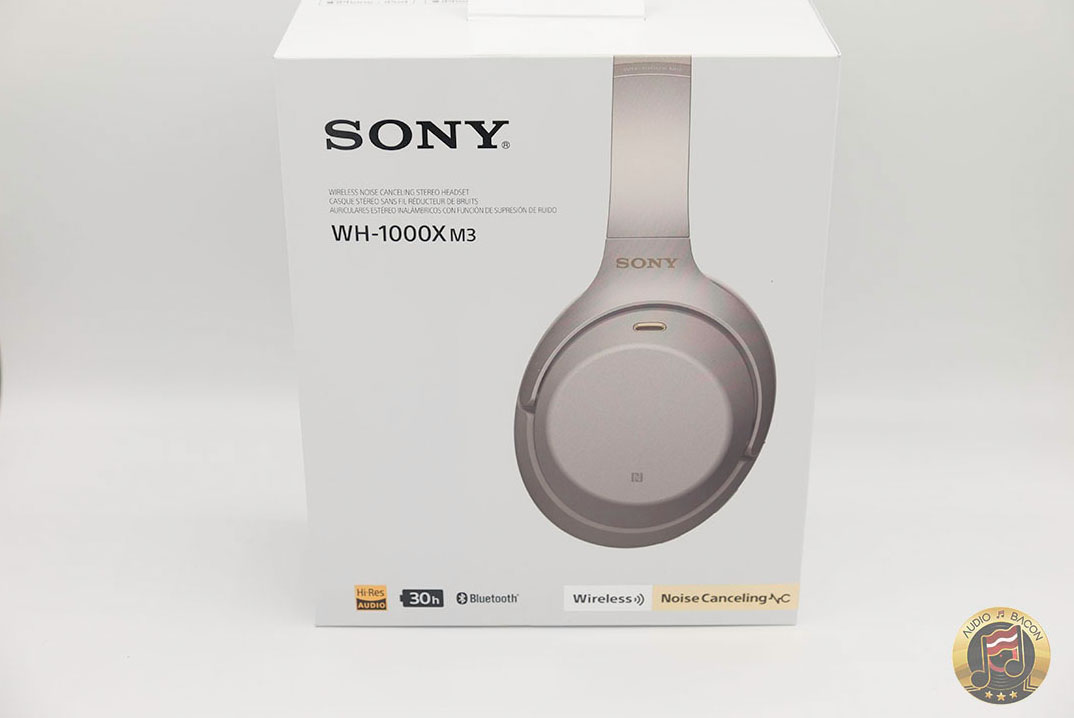
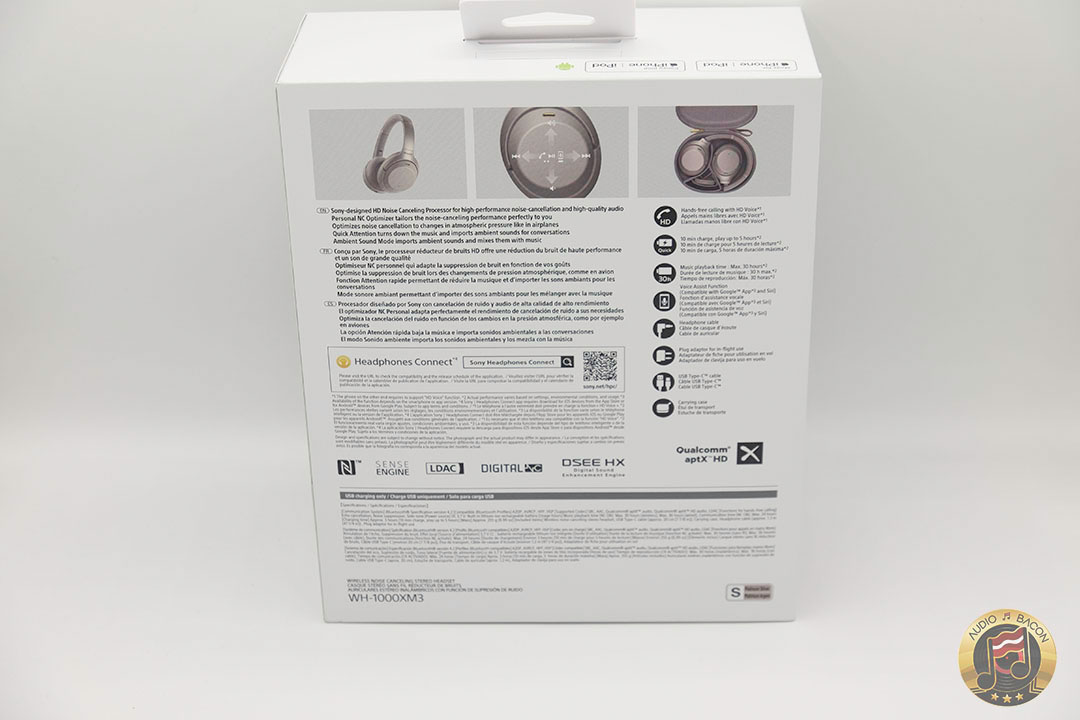
There seem to be two major camps when it comes to Bluetooth headphones: Bose or Sony. Let’s get this out of the way.
The Bose QuietComfort 35 IIs are surely comfortable but the tonal balance always sounded a bit uplifted to my ears. I feel the Sony WH-1000XM2 has more accurate tonality but imaging is a little messy and it lacks some shine up top. Regardless, the Sonys were still wonderfully engaging and definitely more aligned with my palate.
When compared directly with the Bose noise-cancelers, I’ve always felt the Sonys had a more engaging and richer musicality. As for comfort, I’ve never had issues with long listening sessions on the M2. The noise-canceling performance was also more than sufficient in all scenarios.

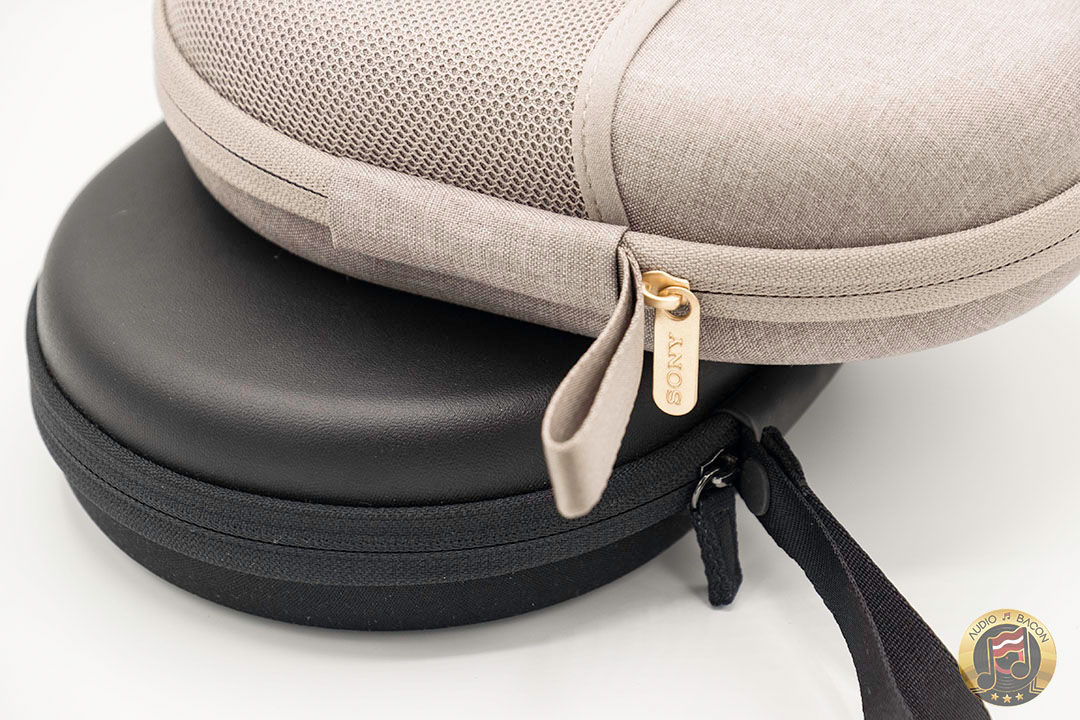
So when Sony announced the WH-1000XM3 ($349.99), my first thought was “It uses the same drivers? It can’t be that much better. ” Well, it turns out Sony has been busy cooking up something really special. On paper, the improvements over the M2 seem to be substantial. I must commend Sony for their attention to customer feedback and constantly improving the listener’s experience.
In any case, the proof is in the listening. Let’s get to it.

I could still hear voices!
There’s a misconception that noise-canceling works well across all frequencies. I’ve recommended the Sony WH-1000X series to many friends. Some have complained about how it doesn’t filter out voices or higher frequency sounds. Why is this the case?
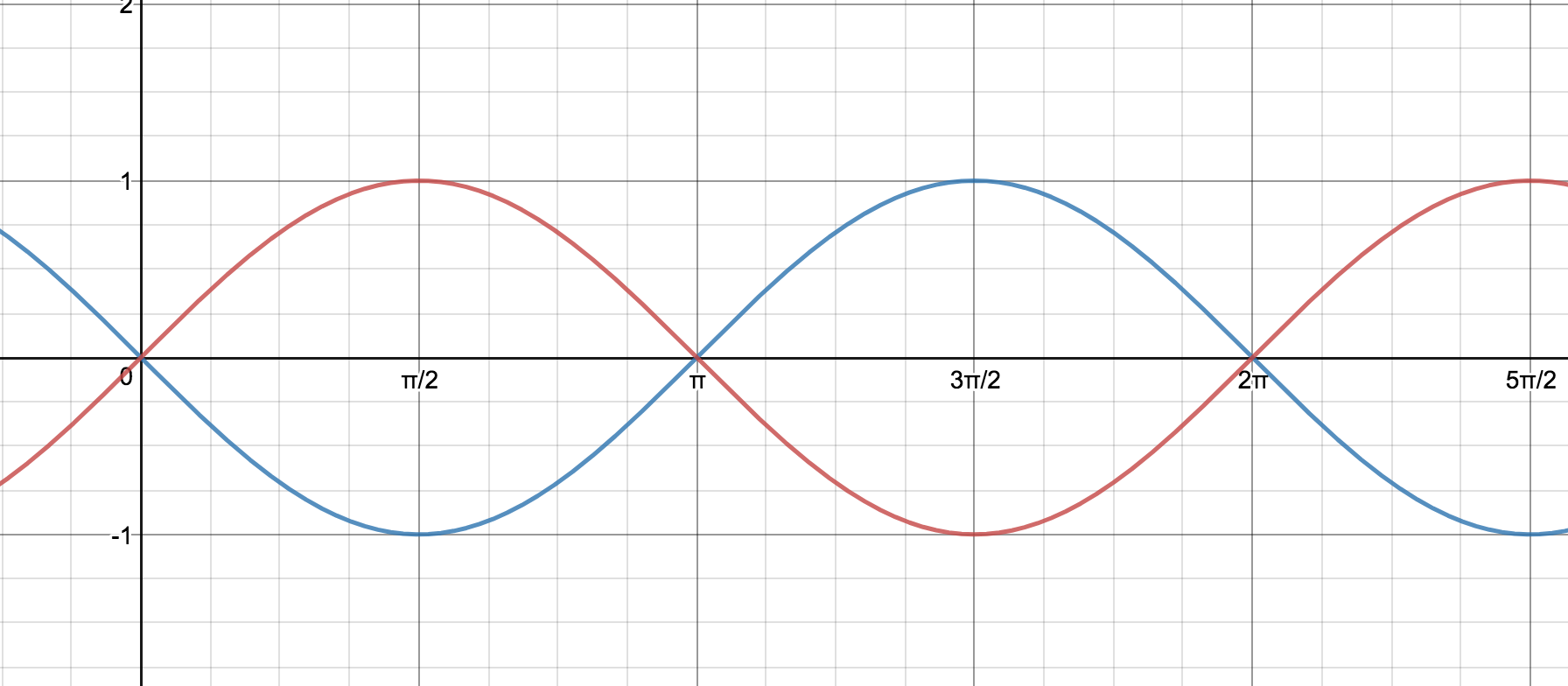
Put simply, these headphones use microphones to record the ambient sound, offset the phase by 180 degrees, and applies it to the output signal. For example, if the blue signal above were the ambient noise, the red would be the offset generated by the headphones – which “cancels” out the sound.
Simple enough – what’s the big deal? The problem is that ambient noise isn’t simple. They’re not perfect sine waves.
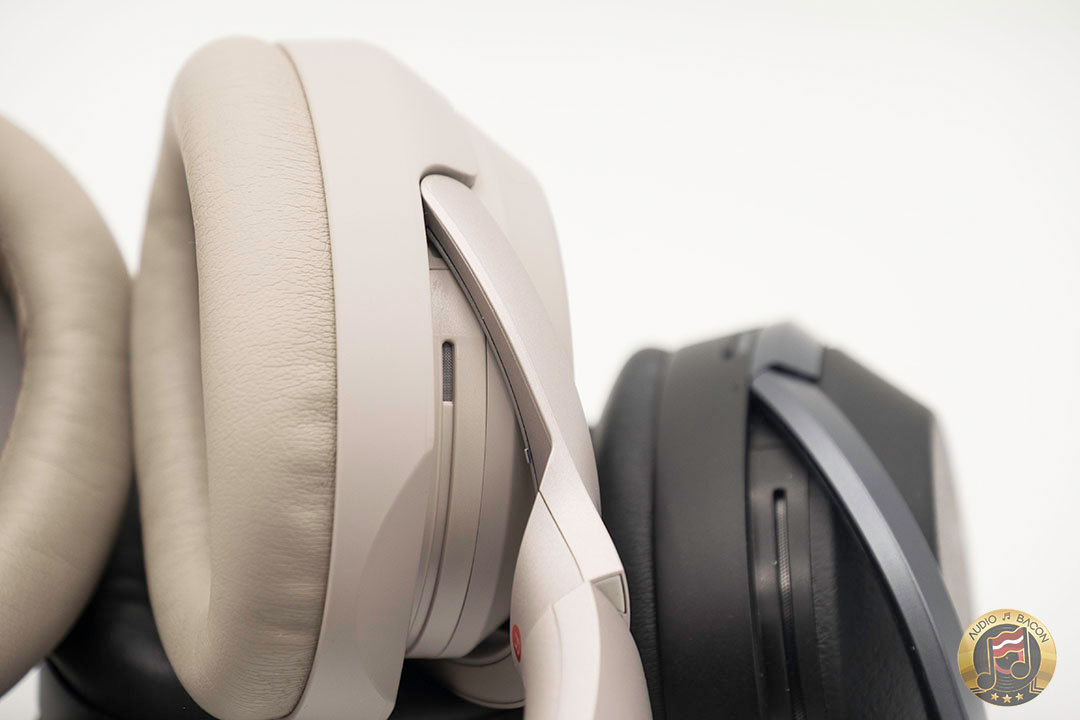
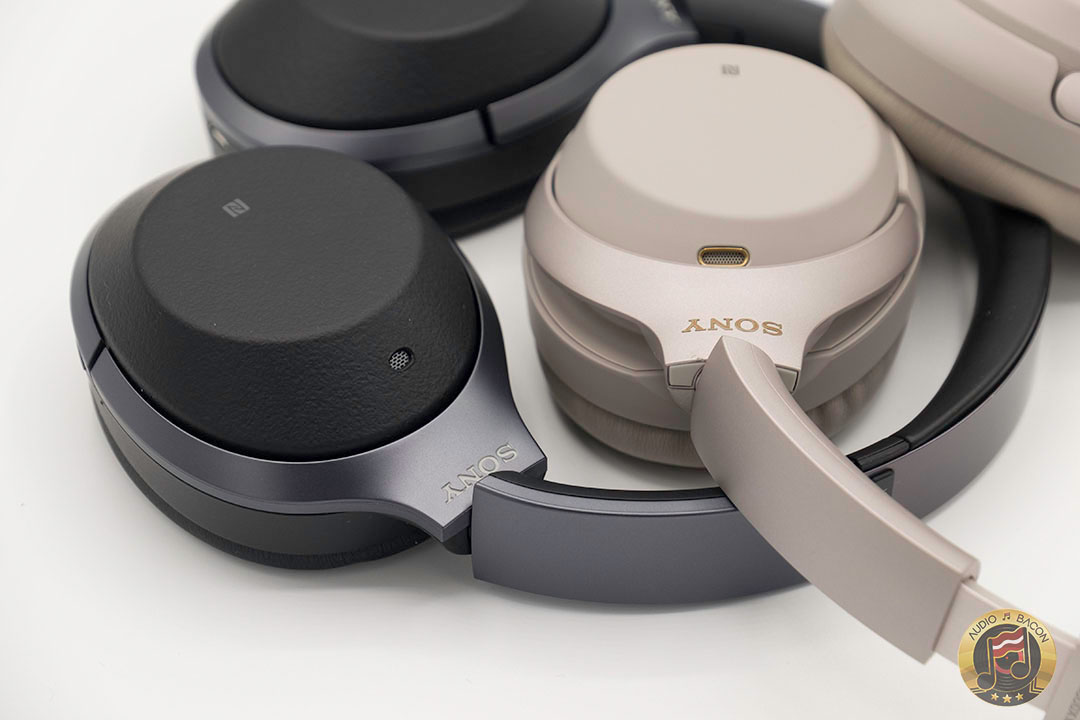
Another issue is timing. The noise-canceling process introduces latency between the recording (of the noise) and the actual playback of music. This latency isn’t as important in the lower frequencies (traffic, train, air conditioner, etc) and hence easier to “cancel out.” Higher frequencies are inherently more susceptible to timing errors and require more care to manage and control. That’s why you’re still able to hear voices and higher-pitched sounds with even the best ANC headphones.
Bottom line: Noise is complex and the noise-canceling process isn’t perfect. A compromise has to be made to preserve as much musicality as possible.

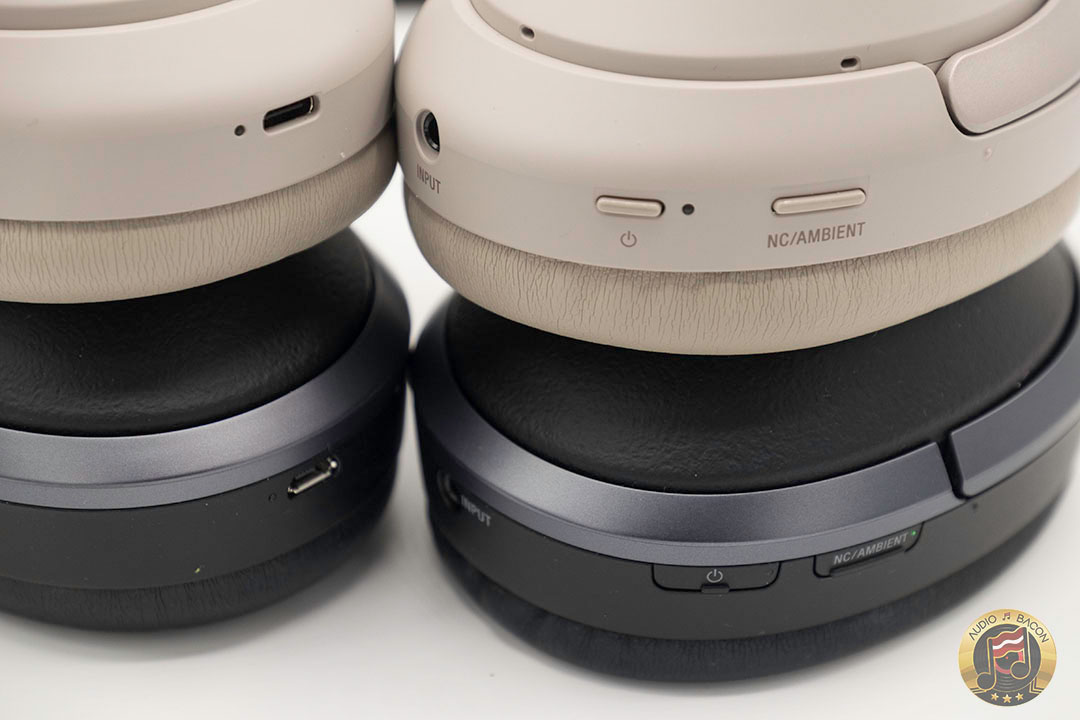
Build, Features, & Comfort
Encompassing all the features of M2 (including the same drivers), Sony was somehow able to go H.A.M. on their new WH-1000XM3 headphones.
-
- New HD Noise-Canceling Processor QN1 – Apparently the most advanced noise-canceling chip on the planet.
- Quick charge USB-C – 5 hours of use with a 10-minute charge! If you do the math, you’ll get a full charge in an hour. Crazy.
- More cushion: Thicker and deeper earpads and headband for extra comfort. It also provides a better seal over M2.
- Improved lifestyle case – A more elegant, fabric carrying case with compartments to actually put your cables.
- Disable Auto Power Off – In situations where you want to block out the world without having the headphones connected to a device.
- Weight – Physically lighter than the M2. It’s noticeable.
- Slick earcups – Smoother, untextured earcups. Some may prefer the “luxury” feel of the M2 with swiping. After extensive listening, the new smoother earcups seem more consistently responsive.
- Larger power and ambient buttons – More prominent power and ambient buttons. Makes it easier to differentiate and access when headphones are worn.
- Improved “Quick Attention” mode – This mode allows you to palm the right earcup to allow sounds from your environment to pass through. Seems to work at a much more natural volume vs. the M2. Which makes it less awkward about not taking your headphones off when responding to someone.
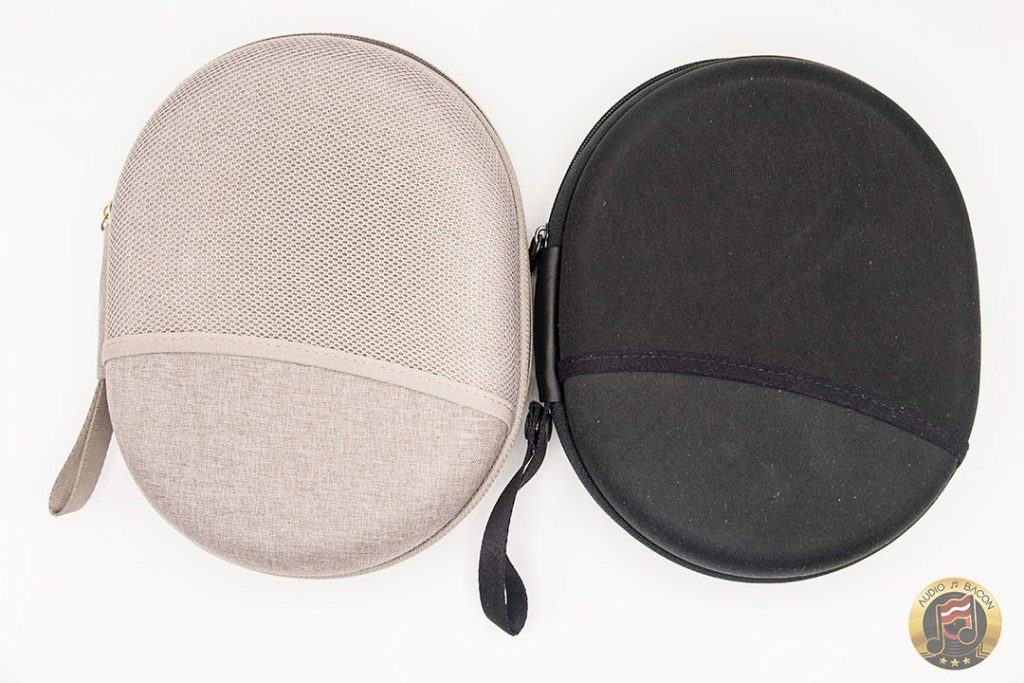
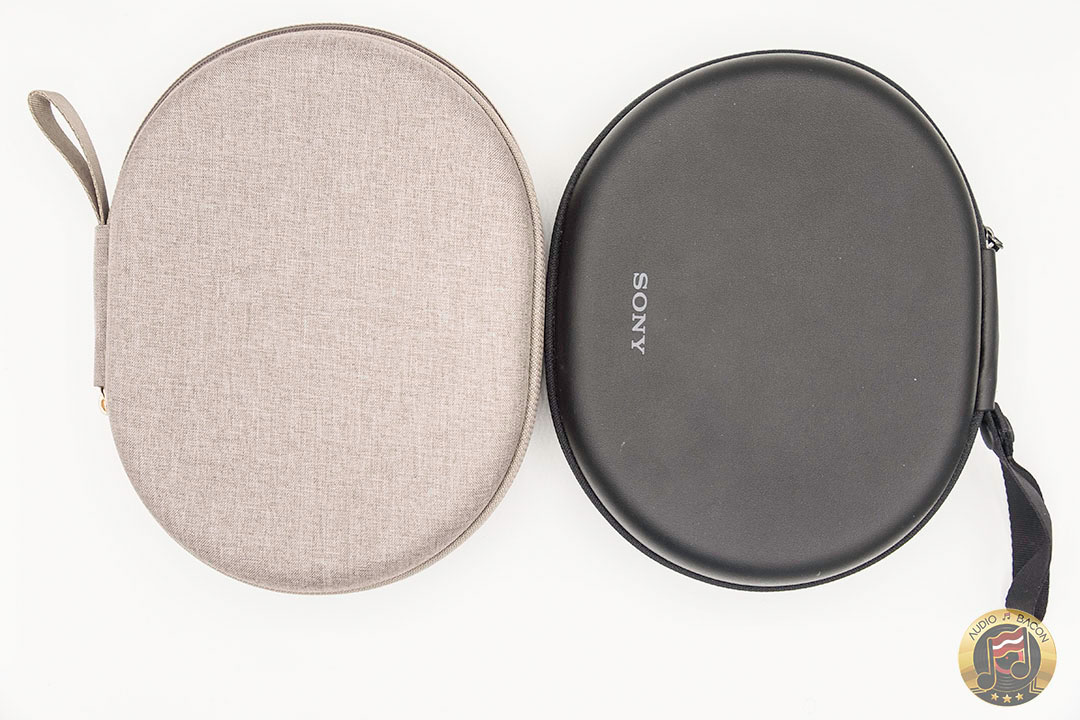
As with the WH-1000XM2, you’ll still get:
- Power on with NFC – Just tap your phone to the earcup and the M3 powers on automatically.
- 30-hour battery life – Make sure you don’t over-discharge by charging it up at least every 6 months.
- Upscaler – DSEE HX and LDAC
- Atmospheric Optimizer – Atmospheric pressure affects sound quality. Luckily, it has a built-in barometer that adjusts the noise-canceling algorithm to compensate for this.
Controls
Like the M2, the M3 has the same convenient touch interface (double-tap to play/pause, swipe to adjust volume/tracks, cover for “Quick Attention”t). It does feel different on the fingertips with the new untextured earcups but responsiveness seems to be just as responsive. This feature beats holding onto buttons and fumbling through your phone. Also, I’ve found myself swiping the right earcup on other headphones I’ve reviewed. Which only reaffirms it’s a feature I can no longer live without on a Bluetooth headphone.
I rarely used the Ambient modes with the previous models so the inclusion of Google assistant is quite useful. I’ve used it to ask random questions and to turn off the lights in the apartment. Most importantly, I’m able to ask Google Assistant to play specific playlists on Spotify. Too nice of a feature.
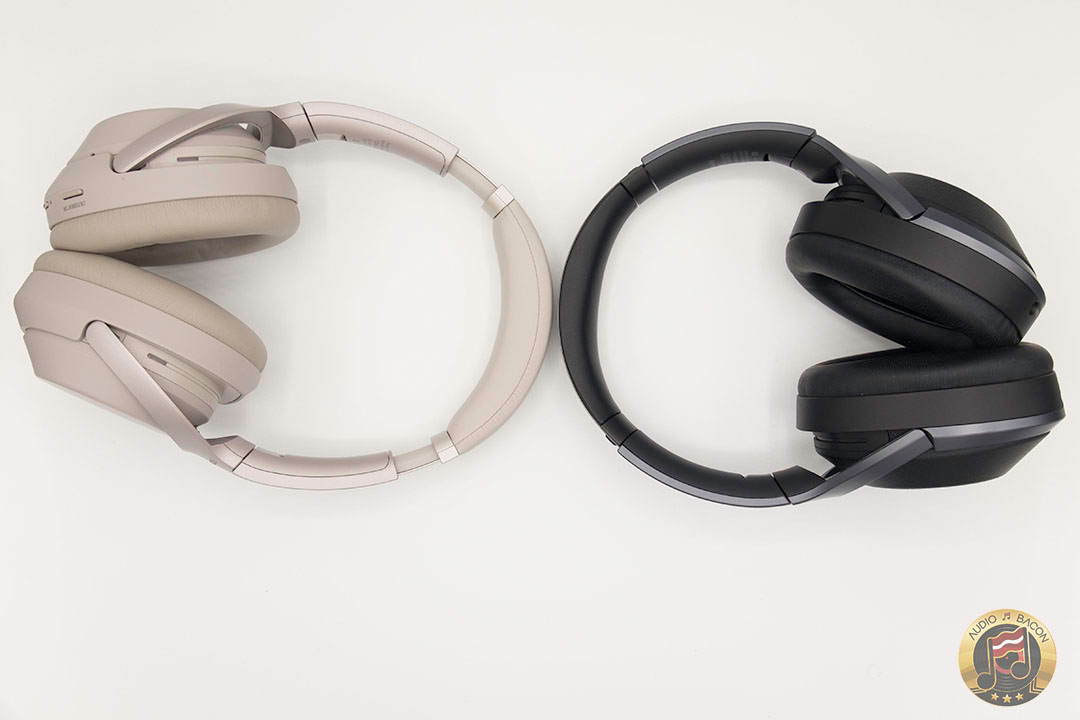
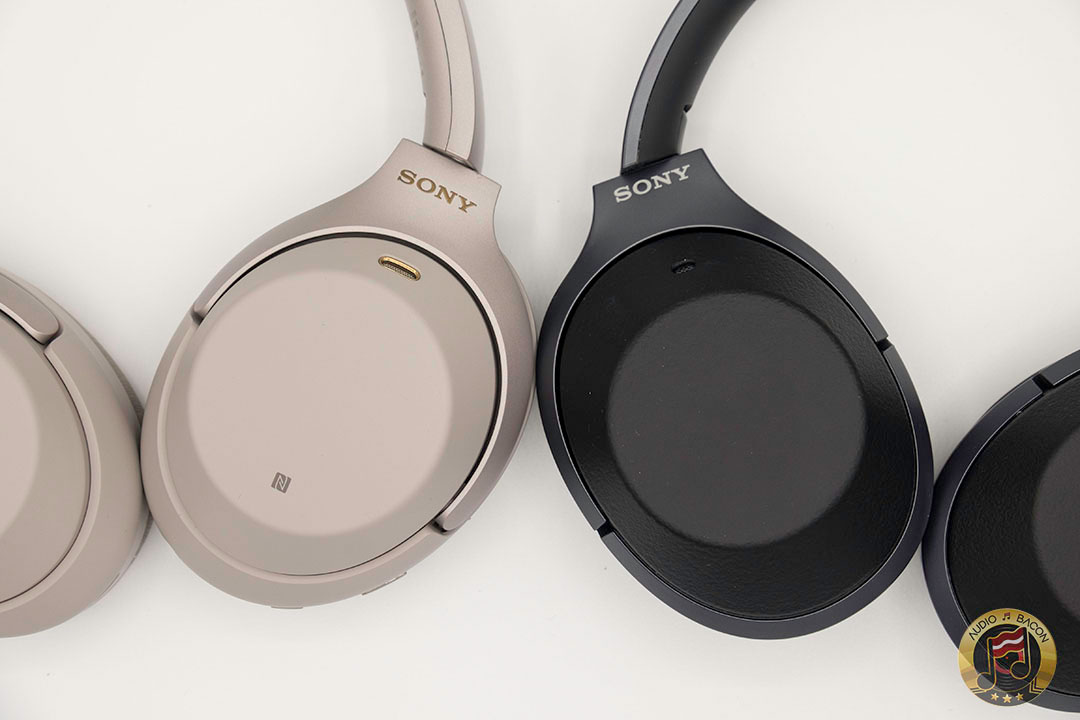
Comfort
In comparison to the M2, the M3 is much more comfortable. There’s a more balanced and evenly distributed comfort around the head. The rigid presence of the headband is much more noticeable with the M2. The M2 is also more “earcup focused” in comparison to the M3, which might provide discomfort over long-term listening for some.
I also didn’t have any issues with heat or sweat with the M3. The lighter weight of the M3s was also apparent over the M2 and very much appreciated.
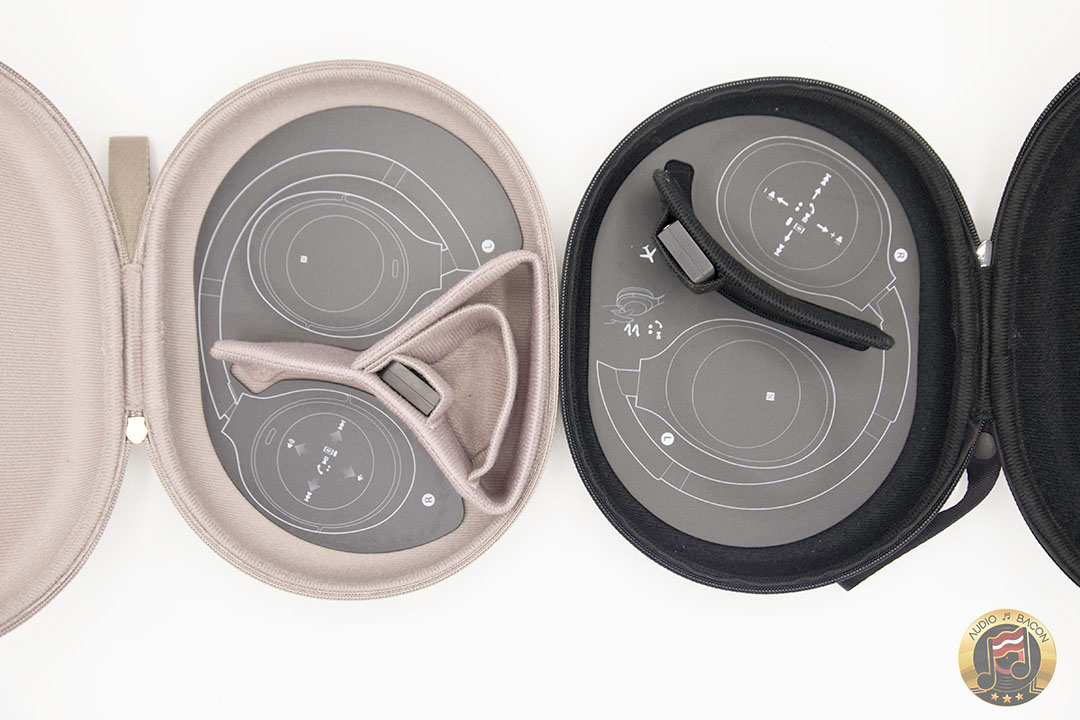
Active Noise Canceling (ANC)
The ANC performance on the M3 is far better than the M2, especially in the lower frequencies. In some cases, the M3 completely eliminates all hums and rumbles while the M2 will allow some of that sound to pass through.
As a real scientific test, standing next to a range hood on full blast, I’m only able to hear a dull, higher frequency sound with the M3’s ANC – all low frequencies are completely inaudible. With the M2, you still know you’re listening to a range hood. There’s still a low-level whirling hum, along with some of the high-frequency shrieks.
As for voices, you’re still able to hear some conversations albeit at a reduced level (less warm). It’s not a subtle improvement over the M2 in lower frequencies. Consequently, it seemingly emphasizes the higher frequencies (since it does a great job of removing the low end). So yes, you could still hear voices but the ANC is removing much more of the ambient noise over the M2.

Phone Call Quality
I rarely speak to humans on phone but for the sake of this review, I called up a local pizza shop. They said they were able to hear me clearly and didn’t hear any feedback. I received my pepperoni, bacon (duh), kale pizza without any miscommunication. Keep in mind this is in an office setting.
There have been complaints from customers who experienced echo and vocal feedback when making calls. When I made an outdoor call, I didn’t experience this. Granted I live in Los Angeles, where there’s no wind. YMMV.

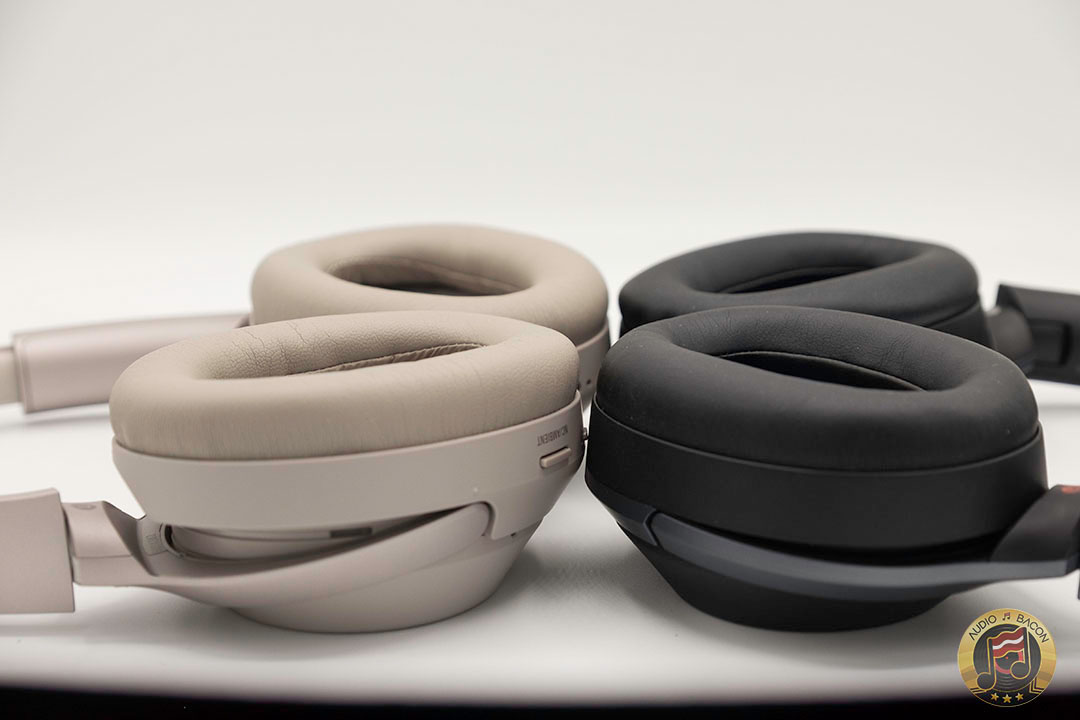

Setup
- Google Pixel with Android Pie
- LDAC – Sounds better than AptX HD to my ears and has fewer dropouts over longer distances.
- DSEE HX – With this option disabled, the overall sound is duller and less refined. Although I prefer this option off on the M2, it seems to sound better enabled with the M3. Music goes deeper and is more fleshed out. Bass is also tighter, more dynamic, and punchier. Overall more musical textures, shape, and smoothness. There is a slight edge in the mids, however.
- Sony Headphones Connect app – I highly recommend installing this app for additional features, customizations, and upgrades. You’ll also need the app to adjust the “Ambient” switch between Google Assistant and Ambient mode. It also makes it easy to tailor the sound to your taste while being able to control the music directly from the app (really useful for A/B testing).
- Headphones Connect App
- Adaptive Sound Control
- Ambient Sound Control
- Personal ANC Optimizer
- Atmospheric Pressure Optimizer
- Surround Position Control
- Equalizer
- Sound Quality Mode – Sound Quality vs. Stable Connection Priority
- DSEE HX
- Ambient button function
- Auto Power Off (NEW)
- NFC – I LOVE this feature. Just tap the Pixel to my headphones and I’m connected. Also made it easy to switch between the M2 and M3 for comparisons.
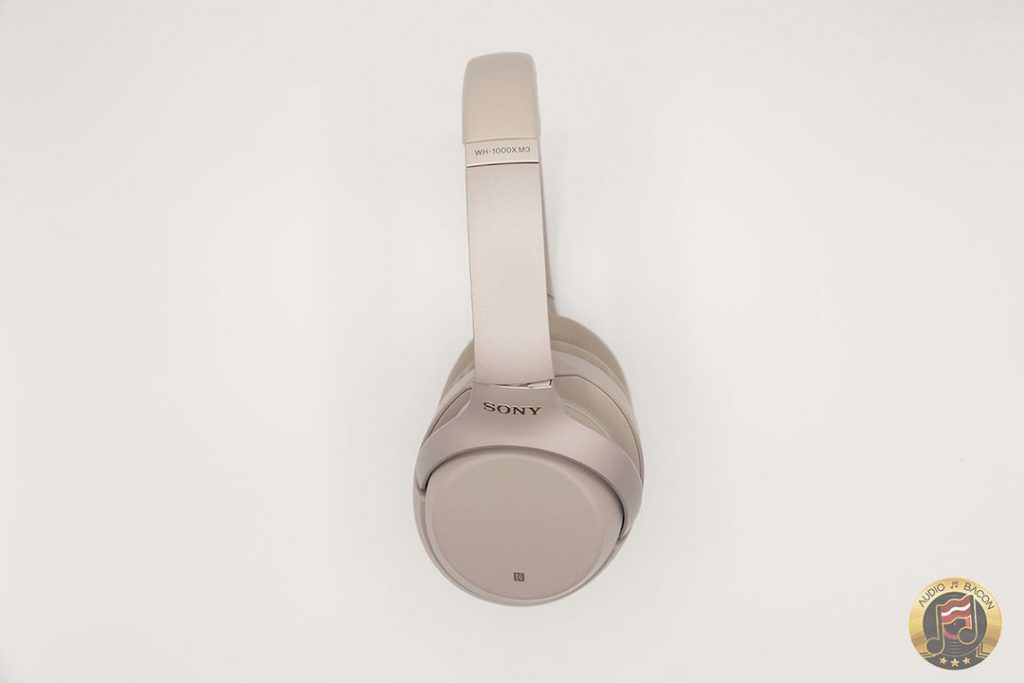
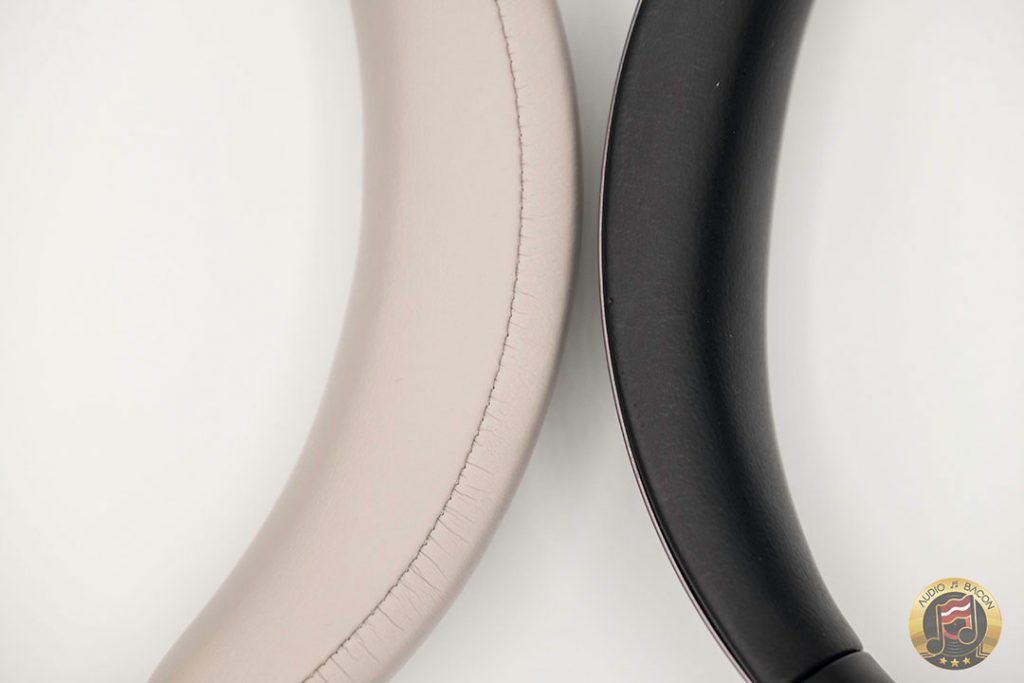
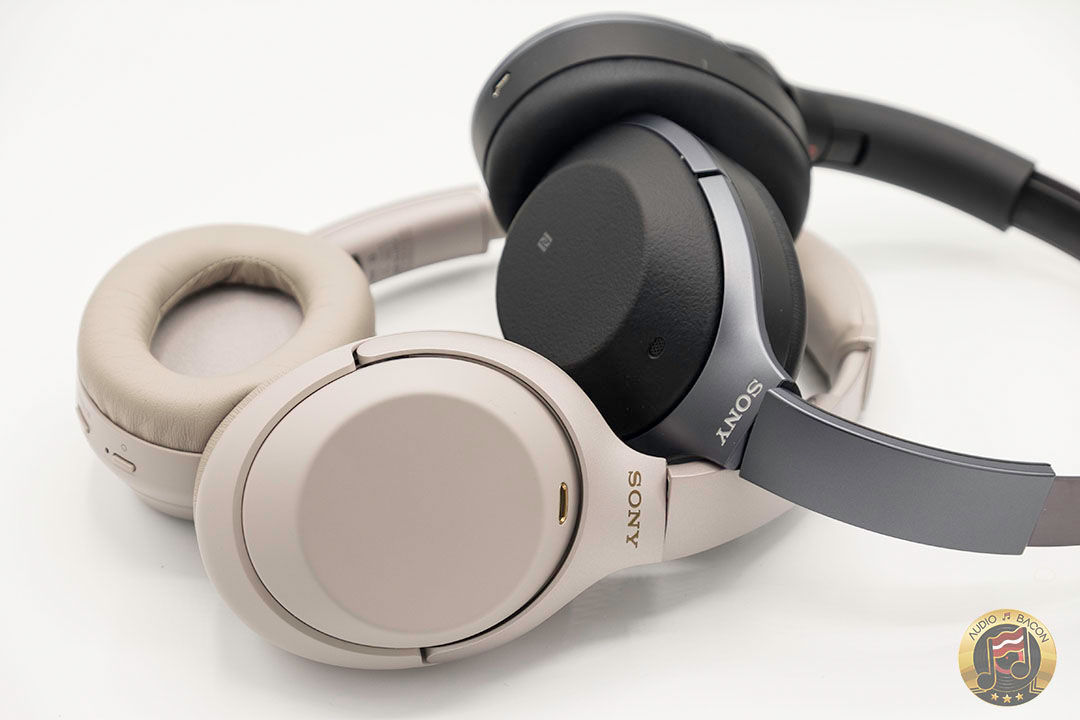
Sound
I’ll be directly comparing the M3 with the WH-1000XM2.

Kina Grannis – Can’t Help Falling in Love (Crazy Rich Asians)
I’ve been a huge fan of Kina Grannis since her early YouTube days and was happy to see her make it onto the big screen. This track has compelled so many sniffles and teary-eyes in the theater. Me? I’m too jaded to be emotional.
The WH-1000XM3 is able to finely delineate the finger and fretwork on the guitar. There’s also more contrast and gradations in vocals and violins. The M3 layers out the soundscape and rhythm in a more dynamic and musical way. It’s also much quieter.
The M2 sounds a bit more smeared and thick in comparison. The strings and voices merge tonally and dimensionally. The M3, on the other hand, images instruments with pinpoint precision and a focused central voice. It has a better grip over the acoustic elements and maintains integrity in the details. Overall, the M3 presents a nicer balance of clarity and warmth.

Nicki Minaj – Chun-Li (Queen)
Off the bat, the M3 is more intelligible and has truer timbre. Gongs and horns have more refined decay and flair. The bass loops are more pronounced and layered out separately. Focus and individualization of acoustic elements are far better reproduced on the M3 over the M2.
The M2 does have a more warmblooded sound, which does make her voice more convincing as far as tone. But the overall sound is more diffused, stretched, and grainy. Bass is also much looser on the M2.
The M2 is, in a way, more forward and in some ways – confused. The M3 has more of that “Hi-Fi” sound with better technicals and refinement. Something even a die-hard audiophile could appreciate.

Rage Against the Machine – Take the Power Back (XX 20th SE)
The M3 has much better bass definition and dimensionality over the M2. The intro electric guitar has more “tickle-factor,” twang, and palpable creaks over the M2. The M2 sounds warmer but more bloated and hazy. Transients aren’t as clean or crisp. Timbre is also more realistic on the M3.
The M3 is also more resolving of lower level nuances and details – in both vocal exertions and instrumental articulation. You just hear more of the intent of the music without its message being lost. The M2 has more grunt and weight but isn’t as transparent, controlled, or deep. Although I do enjoy the warmer tone of the M2, the spacious and dynamic sound of the M3 is more captivating.
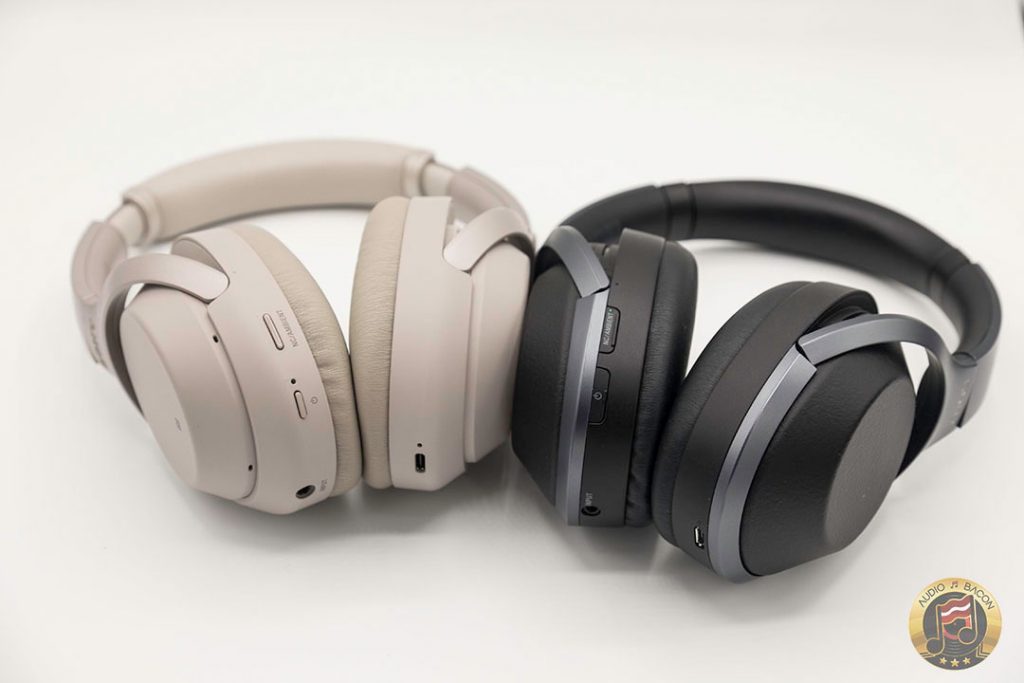
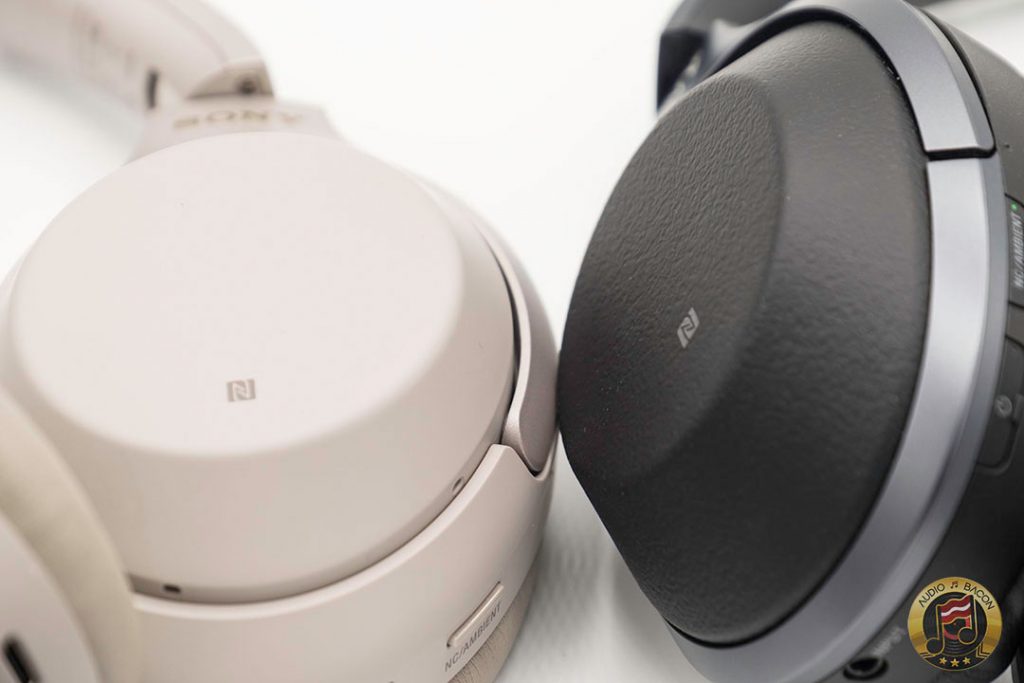
Final Thoughts
Trust be told, Bluetooth audio technology is more about convenience than sound quality. Most hardcore audiophiles will still plug in their Bluetooth headphones to squeeze out that extra performance. Fortunately, the Sony WH-1000XM3 provides both qualities – in wireless form.


In comparison to the WH-1000XM2, the WH-1000XM3 possesses better clarity, dynamics, acoustic layering, and a larger soundstage. It’s not as lush or forward as the M2 but has a tighter and smoother articulation. The M2 sounds more “robotic”, flatter, and unnaturally stretched in comparison. With the M3, voices and instrumentals are precisely layered out and sound more consolidated and contoured. Bass definition is also tighter, more dynamic, and more refined.

The biggest difference between the two is probably imaging. The M3 gets me closer to what I hear from a good 2-channel setup. The M2 is fuzzier around the edges and has a more splashy and loose sound. The M3 exhibits a clearer and more delineated sound across all types of recordings. For those looking to upgrade from the M2, it’s a no-brainer.
In addition to a more “audiophile sound,” we have a lighter headphone that’s more comfortable, fast-charging USB-C, intuitive and convenient controls, LDAC, Google Assistant + Spotify, and superior noise-canceling. I also dig the copper accents. The Sony WH-1000XM3 is simply the ultimate portable Bluetooth, noise-canceling headphone.
(
0) liked
(
0) commented
After you login, you can see the comments and like the post. Login
How to set up your soundbar
(0) - (0)
- 2023.10.12
#soundbar
#LG
View
View AMP
Soundbars bring your audio to life, making everyday viewing feel like a cinematic experience. Find out how to set up your soundbar—wirelessly or otherwise—so you can start enjoying richer, deeper sound.
TVs today are made for cinematic viewing. Wide, vivid displays bring every detail to life, which means that watching a film or your favourite show is more immersive and enjoyable than ever.
As you’ll no doubt have noticed, though, TVs have also become much thinner. This is good news for minimalists and interior designers, but it means that there’s less room inside the TV for things like powerful speakers. So, while your screen may be bigger and better, sometimes the sound quality doesn’t match up.
A soundbar for your TV can solve this. Soundbars offer richer, dynamic audio—elevating your viewing and providing sound that’s suitable for the big screen. Better still, unlike traditional home theatre systems—which often have lots of wires—it’s simple to set up a soundbar and start enjoying higher-quality sound.
Once you’ve chosen the right option, it’s easy to get up and running. And when you’ve set up your soundbar, you can sit back, relax and enjoy the impressive sound—whether you’re connected to a brand new OLED TV or a pre-loved setup.
How to connect a TV soundbar
Depending on your TV, and what you plan to use your LG soundbar for, you have a few different options when it comes to connecting the two devices.
Here, we explain how to connect your soundbar to your TV, and we troubleshoot a few common issues that can crop up during your soundbar setup.
HDMI
HDMI delivers excellent sound quality. So, if you plan to watch or play anything that uses Dolby Digital, an HDMI cable will be your best bet, offering superior audio fidelity.
It’s quick and simple to connect your TV and soundbar this way. All you have to do is plug one end of the cable into the ‘HDMI In (eARC/ARC)’ slot on your TV—usually on the back or underside—and connect the other end to the ‘HDMI Out ’ slot on your soundbar.
Connecting this way also lets you turn your soundbar on or off and control the volume using your TV remote—thanks to Simplink.
Bluetooth
Many of the newer LG soundbars also have Bluetooth. If your TV can connect to other devices this way, you just need to enable Bluetooth on both devices and complete the Bluetooth connection in your TV’s settings.
Optical cable
Finally, even if your TV does not have an HDMI port or wireless capabilities, it’s possible to connect it to your soundbar with an optical cable. Just make sure to check the ‘optical out’ and ‘optical in’ ports for proper alignment.
What is soundbar audio sync?
As well as the conventional wired and wireless options that let you set up your soundbar, LG Wireless Sound Sync is available, too.
It also means you don’t have to worry about messy wires—ideal if your TV is wall-mounted but your LG soundbar is sat on a display cabinet underneath, for example.
Check out our guide here to learn about LG Wireless Sound Sync.
FAQs
Setting up your soundbar is straightforward, but if you run into any problems, don’t panic. Most of these issues are quickly solved.
Problem: Soundbar for TV is not connecting
Solution: if you’ve connected your devices but there’s no sound coming from the soundbar, double-check that the cables are in the right slots—an easy mistake to make!
At the TV, your cable should be connected to the ‘HDMI In (eARC/ARC)’ slot. At the other end, the HDMI cable should be inserted into the ‘HDMI Out’ port of your soundbar.
Problem: Older TVs do not have HDMI connectivity
Solution: some older TVs won’t have HDMI ports, but there’s no need to worry if yours doesn’t—you’ll still be able to connect your LG soundbar to your TV.
Optical cables are cheap and easy to find online and will allow you to hook the two devices up. Once you’ve got an optical cable, locate the ‘optical out’ port on your TV and the ‘optical in’ port on your soundbar—then just plug one end of the cable into each.
Problem: Soundbar software is out of date
Solution: Updating the software on your LG soundbar is something you can do yourself. There are a few steps, though. Our soundbar software update guide will take you through the full process.
Problem: Remotes are not connecting to TV soundbar
Solution: LG customers can get around this issue with the LG Magic Remote by setting up universal control, which lets you control multiple devices with just one remote. Check out this support article to learn how to set up universal control in just a few steps.
You could also use your TV remote to control the volume and turn your LG soundbar on or off with Simplink if the two devices are connected with an HDMI cable.
So, depending on your TV and soundbar setup, there are plenty of different ways to connect the two devices. Whether you choose a wired or wireless connection, you’ll be ready for a completely different listening experience.
Life is Good!
Featured Product
LG Soundbar GX | 3.1 SOUND SYSTEM
Energy Class

LG Sound Bar S95QR
Energy Class

LG Soundbar Éclair QP5
Energy Class

More to read
Helpful Hints
This helpful guide will teach you how to read TV sizes and find the perfect viewing height and distance for any room.
LG Lab
What makes a good soundbar, and what are the best soundbars for LG TVs? We’ve combed through the details in this in-depth guide.
Inspiration
Wondering how and where to watch the next big game? Here’s how to catch the action match after match with an immersive LG TV and soundbar set-up.
(
0) liked
(
0) commented
After you login, you can see the comments and like the post. Login
What is a smart TV?
(0) - (0)
- 2023.10.12
#LG
#SmartTV
View
View AMP
- Discover what makes a television smart and why internet access is so important
- Learn how a smart TV works and how it can communicate with other smart devices
- Make the most out of your smart TV by learning which apps and features are most beneficial
- Answering the most common questions about smart TVs and helping you to decide which one is right for your home
Take a casual glance at the latest televisions on the market and you will see that almost all TVs are smart. But what exactly is a smart TV and why are they so popular? In this comprehensive guide, we’ll attempt to answer all of your questions, from how a Smart TV works and what the best features are to how to decide which smart TV is right for you. Read on to find out more.
What is a smart TV?
The simple explanation is that a smart TV is any television that can be connected to the internet. This gives you access to a wide array of apps and streaming services that let you enjoy access to a wealth of entertainment at the touch of a button.
Much like smartphones, a smart TV also has the ability to connect to other wireless devices, such as a Bluetooth speaker.
How do smart TVs work?
A smart TV needs to connect to the internet and this can be achieved wirelessly or via an Ethernet cable. LG smart TVs come with built-in Wi-Fi connectivity that can detect nearby internet service providers and simply require you to enter your network login information – most likely in the form of your password.
A smart TV can also communicate with other smart devices via different wireless protocols such as Wi-Fi and Bluetooth, as well as Airplay for Apple users.
What can you do with a smart TV?
Thanks to internet connectivity, all the entertainment you could need can be found with a few clicks of your remote or even via voice commands (don’t worry, we’ll explain how that works later).
Access to the best content
Smart TVs make it even easier to access an enormous library of online content. In fact, LG TVs provide access to a Content Store where you can download even more apps like HBO Max and Twitch.1
Free to watch LG Channels
LG Smart TVs also provide many TV channels for free through LG Channels — no subscription required. Viewers can enjoy a variety of movies, as well as TV shows across multiple genres.
Your content on the big screen
With LG Smart Share you can easily share content from other smart devices such as your PC, laptop, tablet or phone. This means you can access all of your music, videos and photos via your TV and without the need for a wire.
FAQs
Hopefully you should have a better understanding of what a smart TV has to offer but how do you know which one is right for you? This section below should help you make an informed choice.
Do smart TVs work without an internet connection?
The simple answer is yes. Even if you don’t have the internet you will still be able to watch TV channels through your aerial or cable TV box. However, you won’t be getting the most out of your television as you won’t be able to access smart TV features such as streaming services and applications.
You also won’t be able to stream music, connect with other smart devices or stream games through the Nvidia GeForce, which is compatible with numerous LG smart TVs.
Is it possible to connect smart TVs to other devices?
This is one of the major benefits of a smart TV as devices such as laptops, PCs, smartphones, tablets and Home IoT devices can all be easily connected. Bluetooth speakers and soundbars can also be easily connected without the need for wires.2 And through LG ThinQ, Home IoT devices can be monitored without hassle on Home Dashboard.
Are all LG TVs smart TVs?
While some older models may not be smart, the current LG Smart TV line-up on offer from LG UK are all smart TVs. Therefore, they can all run apps and connect to the internet.
How to choose the best smart TV for my home?
If you’ve decided to invest in a smart TV then there are plenty of factors to take into consideration, from selecting the right TV size for your room to deciding what it will be mainly used for.
Screen size
Bigger may not always be better as it can depend on the size of your room. There is an optimal distance to view every size screen – which is explained in detail right here.
Picture quality
If you want the best possible image then the latest technology comes with a larger price tag. However, there are an array of options when it comes to smart TVs and you can learn more about the difference between NanoCell, QNED and OLED here.
Watching vs gaming
If you will mainly use your smart TV to watch shows and films then resolution and technology that improves the quality of the picture should be a priority. But if you spend hours playing your favourite games, then having a TV with a high refresh rate – such as this LG NanoCell TV – is critical.
What are the best smart TV features?
The ability to connect to the internet really does make a huge difference, with smart TVs now boasting a variety of features that improve the viewing experience and make your life just that little bit easier. Here are just a few benefits of smart TVs.
Easy access to a wealth of content:
No need for bulky boxes or streaming sticks. Smart TVs give you instant access to video on demand sites such as Netflix, Hulu, YouTube and Amazon Video. You can also get access to music streaming services and cloud gaming.
Easily connect with other devices
You no longer have to worry about cables as smart devices can connect to one another wirelessly. That means you can view photos, stream music, watch videos and even play games straight from your phone, laptop, PC or tablet straight to your TV.
Searching made simple
Looking for a new series or film to watch? With an LG smart TV, you can tap the voice button on your remote and ask for recommendations. With the help of artificial intelligence – in the form of LG ThinQ AI – the TV will know the type of content you watch and can give you a personalised list to choose from.
Control your smart home
By accessing the Home Dashboard on your smart LG TV, you can control all of your smart devices from the comfort of your sofa. This means you could turn on a light or preheat your oven without leaving the room.
Real-time sporting updates
Set up a Sports Alert on a LG smart TV and you can get a live update on your favourite teams and sports even when watching other content. This way you’ll know every time a goal is scored even if you’re not watching the game.
Better picture quality
A number of selected LG smart TVs now come with the α9 Gen4 Intelligent Processor – including the LG OLED evo. This clever piece of technology helps to remove noise and optimise contrast and saturation – thus delivering a crisp, high-quality picture.
If you are looking for a TV that can be easily connected to other devices wirelessly, delivers exceptional picture quality and gives you access to a huge library of content at the touch of a button, then a smart TV is the right choice.
Life's good!
1 Content and app availability may vary by country or region. Separate subscription required for some apps.
2 Compatibility of LG Soundbars will vary by mode. A power cable has to be connected in order to activate the soundbar.
Featured Product
LG OLED evo C3 55 inch 4K Smart TV
Energy Class

LG OLED evo G3 55 inch 4K Smart TV
Energy Class

LG OLED B3 55 inch 4K Smart TV 2023
Energy Class

More to read
LG Lab
Discover the key differences between Mini LED vs. OLED and find out which TV is the right choice for you.
LG Lab
What makes a good soundbar, and what are the best soundbars for LG TVs? We’ve combed through the details in this in-depth guide.
Helpful Hints
This helpful guide will teach you how to read TV sizes and find the perfect viewing height and distance for any room.
(
0) liked
(
0) commented
After you login, you can see the comments and like the post. Login
Apple Watch Series 4 vs. Series 3: Which should you get?
(0) - (0)
Apple watch | 애플워치 - 2018.09.20
#applewatch4
#applewatch3
#2018applewatch
#apple
Apple watch | 애플워치
View
View AMP

Julian Chokkattu/Digital Trends
In September, Apple pulled back the curtain on the latest iteration of its popular smartwatch, the Apple Watch Series 4. The Series 3 is already a superb device — as of 2018, it topped our list of the best smartwatches — so what could Apple possibly do to best it? A few things, as it turns out. The Series 4 has a number of new features (some subtle, some astounding), but it’s not a cheap gadget, and if you already own a Series 3, you may wonder whether the upgrade is worth it. Let’s break down the differences between the two models.
SPECS
| | Apple Watch Series 4 | Apple Watch Series 3 |
| Display size | 40mm (44mm w/ cellular) | 38mm (42mm w/ cellular) |
| Resolution | 324 x 394 pixels (368 x 448 w/ cellular) | 272 x 340 pixels (312 x 390 w/ cellular) |
| Touchscreen | LTPO OLED Retina display w/ Force Touch | OLED Retina display w/ Force Touch |
| Wireless interface | Bluetooth 5.0, Wi-Fi 802.11b/g/n, LTE and UMTS | Bluetooth 4.2, Wi-Fi 802.11b/g/n, LTE and UMTS |
| Depth | 10.7mm | 11.4mm |
| Accelerometer | Yes | Yes |
| Gyroscope | Yes | Yes |
| Altimeter | Yes | Yes |
| Ambient light sensor | Yes | Yes |
| Optical heart rate | Yes | Yes |
| GPS | Yes | Yes |
| Water resistant | Yes | Yes |
| Battery life | 18 hours | 18 hours |
| Price | From $399 | From $279 |
| Availability | Available to order September 14, available September 21 | Now |
DESIGN AND DISPLAY
The Series 3 was a familiar face for anyone who had one of the previous models, with the most notable difference being a colored dot on the crown. It was also just a tiny bit thicker than its predecessors.
The Series 4 sports a seamless edge-to-edge display, and Apple boasts that it is more than 30 percent larger than the Series 3’s. This is in keeping with the trend in mobile devices of purging bezels once and for all, and it makes for a sleek device.
The Series 3 expanded the functionality of the Apple Watch by adding cellular support, and the Series 4 builds on this with an improvement in form: The new watch has a back made of black ceramic and sapphire, which Apple claims will allow radio waves to flow with less resistance, improving reception. The Series 4 also rocks a speaker that is 50 percent louder than the previous generation’s. These factors combine to make a smartwatch that should be much better for making calls on the go — although whether this makes the Apple Watch a legitimate smartphone replacement is still up in the air.
A small but welcome touch is the addition of haptic feedback to the Series 4’s crown. As users scroll through screens, the watch will reward them with a comforting click.
FITNESS AND HEALTH-TRACKING FEATURES
The Series 3 was already a great fitness tracker. In our review, we described it as “clear, concise, informative, and encouraging, and with many different modes to suit the majority of people.” We also noted that “heart-rate monitoring is easy, and there are varied tracking options for walking, running, cycling, swimming, and more.”
The Series 4 pushes the design to new heights with the addition of an electrocardiogram (ECG) sensor. When a user places their finger on the crown, the watch creates a “closed circuit” and can measure the rhythm of the user’s heart. It’s a major addition for customers worried about their heart health, and according to Apple it is the first ECG sensor available over the counter. Apple has already secured approval from the Food and Drug Administration for the Series 4 to be considered a legitimate medical device.
Another boon to the Series 4’s health tracking is the ability to detect when the user has fallen over. If the user remains on the ground for a minute, the watch can even place a call to emergency services, a miraculous feature for people who live alone and need assistance.
BATTERY LIFE
With all these new features, one may wonder if the battery life has taken a hit. Apple hasn’t extended the battery life, but it has at least maintained it. Like its predecessor, the Series 4 will get 18-hour “all-day” battery life, although Apple did bump the outdoor workout battery life to six hours.
PRICING AND AVAILABILITY

Julian Chokkattu/Digital Trends
The circle of wearable life continues, and with the arrival of the Series 4, Apple is dropping the starting price of the Series 3 to $279. The Series 4 will start at $399, or $499 for the cellular version. Customers will be able to place their orders for the Series 4 starting September 14, and the device will be available (in most markets) starting September 21.
CONCLUSION
If you’re strapped for cash, the Series 3 remains a lovely device, and you’d certainly be fine sticking with it (or picking it up at the new, lower price). For those who don’t balk at the Series 4’s price tag, however, it is undoubtedly the smartwatch to get, a bold evolution of what was already the premier device on the market. Its new health-tracking features are unparalleled, and a great addition for anyone concerned about their vitals.
View
(
0) liked
(
0) commented
After you login, you can see the comments and like the post. Login
APPLE WATCH SERIES 4 REVIEW: THE BEST GETS BETTER
(0) - (0)
Apple watch | 애플워치 - 2018.09.20
#applewatch4
#applewatch3
#2018applewatch
#apple
Apple watch | 애플워치
View
View AMP
The greatest Apple product comeback story of the past few years has, without a doubt, been the Apple Watch. Launched with great fanfare four years ago, the initial version tried to do way too much with way too little, and it had confusing software to boot. Worst of all, it was unclear what the original Apple Watch was even for. No single thing stood out.
Then Apple did what Apple often does: iterated, refined, and fixed. But as much as there were software and hardware improvements to the Series 2 and Series 3, the most important refinements were to the Apple Watch’s purpose. It gained clarity. It was for fitness and notifications. Eventually, when it was ready, Apple added better connectivity.
Now, with the Series 4, Apple is iterating again. And, importantly, it’s learned how to iterate the product’s hardware and its purpose at the same time. The Series 4 has finally achieved something like the original goal of the Apple Watch. It’s not quite a do-anything computer on your wrist, but it can be different things to different people now.
With apologies to the new iPhones, the Apple Watch Series 4 was the most impressive thing Apple announced last week. After using it for the past week or so, I think it lives up to the hype.
8.5VERGE SCORE

GOOD STUFF
- Great battery life
- Huge, beautiful screen
- Health-tracking features, not just fitness
BAD STUFF
- Siri is still unreliable
- No always-on screen option
- Complication options can be confusing
Buy for $399.00 from Apple
For the first time since the original Apple Watch, the hardware has been fully redesigned, with a new body and new sizes. But it’s not a major overhaul. These still look like the Apple Watches you’re used to: they have the same rounded-corner lozenge shape, the same glass that curves around to match the body, and the same digital crown and single-button layout.
Before we get too far, we should talk pricing. This Watch is not especially cheap. The smallest, least expensive model comes with GPS and Wi-Fi and costs $399. But if you start piling on the upgrades, you can quickly jack up the price to something that feels exorbitant, especially if you’re upgrading from a Series 2 or Series 3. It’s $29 more for the larger size, $100 for LTE compatibility (plus $10 per month or so from your carrier), and the stainless steel models are $200 more (and only come with LTE). Add in Apple Care, and you can end up spending a lot — though it’s nothing like the wild “Edition” prices of yore. (Don’t even get me started on the Hermès model.)
THE LARGER SIZES DON’T FEEL THAT MUCH BIGGER THAN THE OLDER MODELS
The two new sizes are 40mm and 44mm, but they really don’t feel that much bigger on your wrist than the old sizes. I was using the 42mm Series 3 and the 44mm size is only subtly bigger, but it’s also subtly thinner. To me, it feels about the same, but I think the trade-off of size for thinness is worth it. I suspect the same will be true for people who prefer the smaller size, but my recommendation is to go to a store and try one on before buying.
I’m really happy — and impressed — that Apple managed to make existing Watch bands fully compatible with the new sizes. Even my old third-party bands fit seamlessly into the new Watch body.
Things look different when the screen turns on. The screen on the Series 4 is just incredibly good. Apple says it’s 30 percent bigger, which is one of those specs that’s easy to just sort of pass over when you read it. But 30 percent is a lot, and you absolutely notice it right away.
It’s still OLED so the blacks are truly black and blend into the watchface glass. But if you pick a full-screen watchface, you’ll see that the screen also goes closer to the edges of the Watch than before, including the rounded corners.
The overall effect makes the square display on my Series 3 look dumpy and cramped by comparison — even though, until last week, it was arguably the best smartwatch screen on the market. As John Gruber writes, “The Series 4 displays take up so much more of the face of the watches that the new 40mm watch’s display is larger than the display on the old 42mm models — the new small watch has a larger display than the old large watch.”
:no_upscale()/cdn.vox-cdn.com/uploads/chorus_asset/file/13111171/vpavic_180917_2949_0203.jpg)
:no_upscale()/cdn.vox-cdn.com/uploads/chorus_asset/file/13111151/vpavic_180917_2949_0210.jpg)
:no_upscale()/cdn.vox-cdn.com/uploads/chorus_asset/file/13111173/vpavic_180917_2949_0235.jpg)
Beyond the size and the screen, there are a few other subtle exterior differences to note about the hardware. The rear of the Watch is now ceramic instead of metal to allow for a better wireless signal. If you spring for the LTE model, the garish red dot on the digital crown has been replaced with a much more subtle red ring.
The microphone has been moved between the two buttons so that it’s further away from the speaker to help reduce echo in calls. The speaker has been boosted to provide more volume. It really is way louder, and I haven’t heard any distortion during phone calls.
Last year’s Apple Watch had some issues with LTE at launch, though Apple fixed it up fairly quickly. This year, I haven’t had any major problems with LTE. In fact, several people I called with the Watch simply didn’t believe I wasn’t on a phone. It sounds good, and the louder speaker means you can hear it without holding the thing next to your ear.
But it does take the Watch a minute (sometimes two) to switch on LTE and get connected. That’s not radically worse than what happens when you pull your phone out of airplane mode, but on the Watch, it’s always a little less clear what’s happening and why when data is not coming in.
On the inside, there’s a faster S4 processor, a W3 chip (which is just Apple’s W2 chip with Bluetooth 5.0 support), and an accelerometer and gyroscope that are able to take samples of your movements more often (which is how Apple was able to add the new fall detection feature). Apple’s also tied haptics to the digital crown, so when you spin it, you feel little ticks that precisely correlate to what’s happening on the screen. It’s completely unnecessary but pretty neat.
BATTERY LIFE HAS BEEN STUPENDOUS
Last but certainly not least: the battery size is about the same. Battery life on the Series 4 is as good or better than on the Series 3 Watch. Apple claims 18 hours of regular use or six hours of outdoor workouts. I haven’t done a six-hour outdoor workout (and I don’t plan to), but my testing shows the battery life far exceeds Apple’s own claims.
I took the Watch off the charger on Saturday morning and wandered around Oakland for four hours while disconnected from my phone. I used LTE for maps, a couple calls, and GPS for tracking my outdoor walk “workout.” I was still at 50 percent at the end of that day, and I didn’t get below 20 percent by the end of my lazy Sunday (which also involved an hour or so of GPS tracking and some LTE data).
The battery life is so good that I wish Apple gave me an option for an always-on ambient screen, maybe by turning off some radios. Alas, you still have to turn your wrist to see the time.
:no_upscale()/cdn.vox-cdn.com/uploads/chorus_asset/file/13111157/vpavic_180917_2949_0076.jpg)
watchOS 5 is kind of a grab bag of new features, which sounds dismissive, but I don’t mean it to be. It’s a good sign that watchOS is ready to be laden with features instead of rethought from the ground up, as it was in years past. There’s support for podcasts, Walkie Talkie mode, slightly improved (and grouped!) notifications, and a bunch of fitness and health options.
:no_upscale()/cdn.vox-cdn.com/uploads/chorus_asset/file/13112701/IMG_0030.png)
:no_upscale()/cdn.vox-cdn.com/uploads/chorus_asset/file/13112703/IMG_0031.png)
But the thing people will probably pay the most attention to are the new watchfaces that are available on the Series 4 Watches. They’re designed to show off the new rounded-corner screen. Some are just sort of flashy animations, while others are chock-full of new complications in phantasmagoric colors.
Of the new watchfaces, I am most fond of the animated ones. Apple says that the fire, water, and vapor animations were all created with practical effects. As in: literal fire, vapor, and water were filmed with high-speed cameras as they flowed on custom-welded rigs. They look great; the animations naturally flow right up to the rounded corners.
The watchface that you’ll probably see the most in ads is called “infograph.” It takes the bigger screen of the Series 4 and fills it up with as many as eight complications. There’s a “modular” version as well that shows the digital time and six complications. Like many parts of watchOS 5, they use new, more rounded fonts, too.
The infograph watchface is polarizing. I don’t like it at all, though I wouldn’t go so far as to call it a “design crime.” There are just too many colors doing too many different kinds of work splashed all over the screen in a garish and show-offy way. Too many of Apple’s watchface options are like that. Call me boring, but I prefer a Watch look that’s a little more staid. It makes me a little sad that Apple still doesn’t allow third-party watchfaces.
Even if you like the new watchfaces, you probably won’t like what happens when you try to select a new complication. There are now “old”- and “new”-style complications, which are completely different and incompatible. The newer watchfaces need the new complications, so third-party developers will have to update their apps (and so will Apple). You can’t add the Home app to the new watchfaces, only the old ones. The most annoying part is that there’s no way to know what complications are available on any given watchface without scrolling through and looking for the one you want.
:no_upscale()/cdn.vox-cdn.com/uploads/chorus_asset/file/13111167/vpavic_180917_2949_0025.jpg)
On the fitness front, the best new feature is automatic workout detection, which can tell if you’ve started or stopped a workout and ask you if that’s the case and if you want to log it. There are now options for yoga, hiking, setting a target pace, and tracking your pace. You can also see your cadence as you run and challenge somebody to a week-long exercise competition. (I didn’t extensively test these features; I’m still at the “fill your damn rings” stage of my exercise goals.)
Maybe the most interesting change, though, is how Apple is more clearly separating out health features from the fitness stuff. There are a few new features in watchOS 5 and the Series 4 that are designed to help you detect health problems, not just encourage you to close those activity rings or run a marathon.
That’s interesting because it more explicitly positions the Apple Watch as a device that can help detect health problems, making it something that people who can’t exercise that much might be more interested in. Apple, as always, is very careful to not cross the line into making actual health claims about its new features. It’s careful to say that the Watch can detect things like irregular heartbeats, not that it will.
THERE’S A BIG DIFFERENCE BETWEEN “TRACKING YOUR FITNESS” AND “MONITORING YOUR HEALTH”
watchOS 5 is able to detect low heart rate now, in addition to high heart rate. Later this year, Apple will add detection for irregular rhythms and provide notifications for them. The big new feature on the Series 4 is that it can take an electrocardiogram (EKG) using electrodes built into the back of the Watch and the digital crown. It can then send a PDF of your results to your doctor. I wasn’t able to test that as it is coming later this year. Both irregular heartbeat detection and the EKG features have been granted “de novo” classification by the FDA, and that distinction is important, as Angela Chen explains:
It’s important to understand that the FDA has “cleared” both apps, but that’s not the same as “approving” them. There are usually three ways to get the FDA involved in a new project, according to Jon Speer, co-founder of Greenlight Guru, a company that makes quality management software for medical device companies. The most advanced is FDA approval, which is done only for Class III products, or technologies that might have higher risk but also a higher benefit. (Think: implantable pacemakers.) Approval is the gold standard, and companies need to do a lot of testing to receive this designation.
The Apple Watch is in Class II. For Class II and Class I, the FDA doesn’t give “approval,” it just gives clearance.
Another new feature exclusive to the Series 4 is hard fall detection, thanks to a new 800Hz accelerometer and gyroscope that can that can measure up to 32 G-forces. The Watch should be able to tell if you’ve had a spill and ask if you’d like to call emergency services. If you don’t move for a full minute after falling, it can do that automatically and also send a message to your emergency contact. Apple is turning it on automatically for users who tell the Watch they’re over age 65, and it’s making it an option for younger users as well.
I’ve tried to trigger it without hurting myself and I haven’t been able to, which I suppose is a point in the Watch’s favor. (My tests were far from scientific; I was just hurling myself at the couch.) Apple says that to build its fall detection algorithms, it used data from a study involving 2,500 participants over several years, and it also worked with assisted living facilities and movement disorder clinics.
So throwing yourself into bed after a long day shouldn’t trigger it, but a fall from a ladder or tripping over a curb and flailing your arms as you hit the ground might. Again, Apple’s health claims are not that the Watch will detect these falls, but simply that it could.
:no_upscale()/cdn.vox-cdn.com/uploads/chorus_asset/file/13111175/vpavic_180917_2949_0180.jpg)
A lot of people were really excited about Walkie Talkie mode, but after testing it, I don’t think it’s especially compelling. Unlike those classic Nextel Push-to-Talk phones, Walkie Talkie mode on the Apple Watch is essentially just a FaceTime Audio call with a button you press to talk and little beeps and visual indicators to tell you if it’s your turn.
:no_upscale()/cdn.vox-cdn.com/uploads/chorus_asset/file/13112603/IMG_0035.png)
When you send the first message, you have to wait for a connection to be made, and then it’s just tapping the screen and talking. The connection stays active until a few minutes after the last person finishes speaking. It’s neat, but it doesn’t feel as instant as a true PTT system. I also had connectivity problems with it, but that may have just been OS launch-day overloading.
That said, it’s silly fun to push the big yellow button with your nose when it’s your turn to talk. I strongly recommended it. (If it becomes a thing, I want to make sure I get full credit for coining the term “nose calls.”)
Siri on watchOS 5 is still Siri. There’s a new feature that lets you simply lift your wrist and start taking instead of pushing a button or saying “Hey Siri,” and it works really well. The Siri shortcuts you set up on your iPhone should also work from your Watch, too. Siri still feels super unreliable, though.
Siri gets especially fussy when you have a spotty connection. Too often, when I wanted to ask a question, I’d be met with a “hang on…” message, followed by a “I’ll tap you when I’m ready” message, followed by an interminable wait during which I’d forget whatever it was I needed Siri for.
One last little watchOS 5 thing I must mention: you can open links to webpages now, too, which is kind of fun. Articles you click on get put into readability mode, so you don’t have to worry too much about ads or bad layouts on your Watch. Hooray for the web!
:no_upscale()/cdn.vox-cdn.com/uploads/chorus_asset/file/13111159/vpavic_180917_2949_0162.jpg)
This year’s Apple Watch is incredibly good. If you use it just for notifications and step counting, it’s probably overkill, but it’s able to handle more advanced features better than any other smartwatch I’ve tested. Mapping, music, workouts, calls, texting, podcasts… most of the stuff I could imagine wanting from a smartwatch works better than ever before. The only real bummer is that I still don’t feel like I can trust Siri to do everything I’d like reliably, and that’s more of an intermittent hassle than a real killer.
If you’re looking at this Watch with an eye toward the health features, I have to admit that they’re difficult to test: the new features could be very compelling to a lot of people. Passive monitoring for heart problems and falls could literally be lifesavers, but they aren’t all available yet, and we’d need to see third-party lab testing to really make a call there.
THE APPLE WATCH HAS EARNED ITS PLACE AS THE BEST-SELLING WATCH
For people who are looking to upgrade an existing Apple Watch, that’s a harder question to answer than usual. Spending four to six hundred bucks for a bigger screen is a luxury I wouldn’t casually recommend to anybody, even though the screen is wonderful. Many of watchOS 5’s best features will work fine on more recent Apple Watches, too. Yes, there are exclusive watchfaces on the Series 4, but that’s also a silly thing to drop so much money for.
What I can tell you is this: the Apple Watch has earned its place as the best-selling watch. It’s at least an order of magnitude better than other smartwatches and fitness trackers. Nearly everything it is designed to do, it does very well. It’s not yet a general purpose computer for your wrist, but, thankfully, Apple isn’t aiming for that anymore. The Watch is for doing little bite-sized versions of phone things like texting and listening to music, it’s for fitness, and it’s for health monitoring.
Now that Apple has figured out what the Apple Watch is for, the Series 4 just makes it better.
View
(
0) liked
(
0) commented
After you login, you can see the comments and like the post. Login
SONY 1000X M3 REVIEW: SUPREME NOISE CANCELING
(0) - (0)
Sony WH-1000XM3 - 2018.09.19
#sony
#wh-1000xm3
#noiseCanceling
#Bluetooth
#Headphone
Sony WH-1000XM3
View
View AMP
Sony seizes the title for best noise-canceling cans with a winning redesign
There’s an enthusiastic “It’s a Sony” sticker on a kitchen wall in my childhood home. I put it there more than 20 years ago when my parents brought home a big-screen Sony TV and an accompanying Sony VCR. Since that day, I’ve owned a Walkman cassette player and a Walkman phone, a PlayStation, a NEX mirrorless camera, and an illogical desire for VAIO laptops. Like any child of the ‘90s, I grew up with Sony’s name being synonymous with the most desirable technology. This is why it’s such a nostalgic pleasure for me to today be reviewing a new Sony product that is the undeniable best in its category.
The Sony 1000X M3 over-ear, noise-canceling headphones are the third iteration of Sony’s already great 1000X series. The original 1000Xs cost a cent under $400 and were instantly among the best in their class. Sony seemed to find little room for improvement with its second-gen 1000X M2s, so it chopped $100 off the price and polished up a couple of technical aspects — though that came at the cost of some excitement in their sound. Just as it seemed as though Sony would slip behind the rapidly improving competition, however, the 1000X M3s arrive and rectify almost every issue the series has had so far, while splitting the cost difference between its predecessors with a sensible $349 price.
9VERGE SCORE
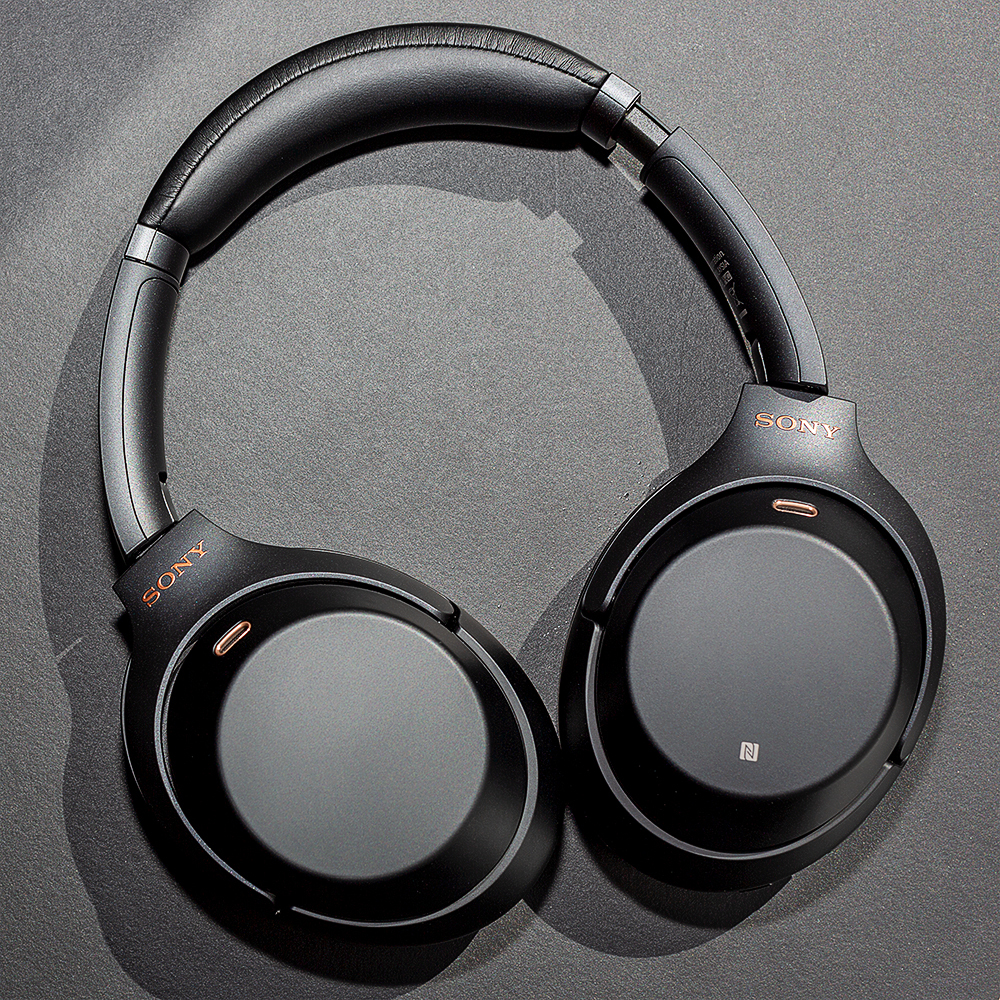
GOOD STUFF
- Extraordinary noise canceling
- Pillowy comfort
- USB-C charging and stupendous battery life
- Best sound from Sony’s 1000X yet
BAD STUFF
- Touch controls are still a pain
- Bass response could be cleaner and more defined
- Pads get sweaty on warm days
- Irritating blinking LED status light on left ear cup
Buy for $349.99 from Best Buy Buy for $348.00 from AmazonBuy for $349.99 from B&H Photo
Sony got two things very right with its first-gen 1000X headphones: the noise canceling and the fit. That’s why I find it surprising that the company has gone for a major redesign with its M3 generation: the physical design didn’t seem in need of much tweaking. But everything that Sony has changed has been for the better. It takes courage to tinker with a popular design and skill to actually improve on it.
EVERY CHANGE SONY MADE HAS BEEN FOR THE BETTER
Some 1000X M1 and M2 users had complained about the headband being susceptible to cracking (an issue I never encountered in months of contented use of those headphones), and they’ll be comforted to know Sony’s design shakeup has delivered a new headband with more padding. The updated headband has a more oblong shape than previously, which makes the headphones more discreet by fitting them closer to the wearer’s head. Even when they’re not being worn, the 1000X M3s are easier to grip and tote around because of their narrower shape, plus they still collapse down to fit into the provided compact carrying case.
:no_upscale()/cdn.vox-cdn.com/uploads/chorus_asset/file/12571443/jbareham_180823_2895_0052.jpg)
WHO IS NOISE CANCELING FOR?
Noise-canceling headphones used to be the exclusive preserve of frequent flyers who cared more about tranquility than sound quality or aesthetics. But, as the world has grown noisier and technology has gotten better, we all now demand and are getting noise-canceling cans that sound great and don’t look like a Volvo parked on your head. Whether at home, on the train, or in the office, noise canceling is fast becoming a must-have feature for over-ear headphones.
Bose and Sony are the premier brand in this space, but others like Bowers & Wilkins, Beyerdynamic, and Bang & Olufsen are offering compelling alternatives.
Somehow, Sony has reduced the weight of its latest 1000Xs while increasing the battery life. With noise canceling turned on, Sony now claims 30 hours of endurance, a full 50 percent more than the previous 20 hours. Even as someone who deals with the constant improvement of tech on a daily basis, I find this massively impressive. More on battery life later, but the new lighter weight truly elevates Sony’s headphones to the absolute top tier for comfort, whether you’re talking wired or wireless over-ear models. Bose’s QuietComfort 35s endure in popularity in large part because they’re so effortless to wear, and Sony goes that one notch higher.
When I reviewed the 1000X M2s, I noted that I wore them without a hint of discomfort for a full five-hour trip, and the M3s are even less intrusive. Sony has made the space for your ear inside the M3 pad a little deeper, and the pads themselves are designed to distribute pressure evenly. I’ve used these headphones across three different two-hour flights in the past week, and my colleague Chaim Gartenberg (who wears glasses) also found them exceedingly comfortable on the eight-hour journey from New York to Berlin. In fact, there’s not a member of the Verge staff that’s tried these headphones without falling in love with their fit and feel.
:no_upscale()/cdn.vox-cdn.com/uploads/chorus_asset/file/12571453/jbareham_180823_2895_0120.jpg)
Bose QuietComfort 35 II next to Sony 1000X M3.
Design critiques are hard to find, but I still have a few to offer. One is that the headband’s sizing adjustment slips out of position easily. If you’re super pedantic about setting your ideal fitting and never wanting it to change, that might irritate you. You don’t, however, have to be punctilious to be annoyed by the blue status LED on the left ear cup: this is a remnant of Bluetooth headphones of yore, and I’ve no idea why Sony keeps putting it on its latest headphones. Beyerdynamic recently showed off a much smarter design that put the LEDs on the inside of the ear cups. And the final issue I came up against with the 1000X M3s is that they do heat up and get sweaty on a warm summer’s day. This is the one aspect where I think Bose’s more airy QC35s have the edge over Sony and most of the rest of the competition.
PHYSICAL BUTTONS AND SWITCHES > TOUCH CONTROLS
I don’t expect everyone to agree with me on this point, but Sony’s touch controls remain the same as they ever were, and I remain fundamentally opposed to them. They’re reasonably functional: swipe up and down for volume, forward and back for track change, and double-tap the middle to pause, play, or pick up a call on your connected phone. The problem comes in when you’re rocking out to some track and you want to raise the volume but accidentally fast-forward to the next song. I did that more than once. There’s also a slight lag to the headphones recognizing double taps, leading to a recurring split-second of uncertainty anytime I want to control playback. Touch controls on headphones: cool when they work, infuriating when they don’t.
:no_upscale()/cdn.vox-cdn.com/uploads/chorus_asset/file/12571433/jbareham_180823_2895_0016.jpg)
:no_upscale()/cdn.vox-cdn.com/uploads/chorus_asset/file/12571435/jbareham_180823_2895_0029.jpg)
:no_upscale()/cdn.vox-cdn.com/uploads/chorus_asset/file/12571439/jbareham_180823_2895_0041.jpg)
We have to talk about Sony’s noise canceling. It’s unreal. It’s like noise insulted Sony a long time ago and Sony retreated to its dojo for many years, trained hard, and then came back to kick noise’s butt. Bose, Sennheiser, AKG, Bowers & Wilkins, Bang & Olufsen — name any company that produces noise-canceling headphones, and I guarantee you that its noise canceling is not as good as Sony’s. There’s a new dedicated chip just for processing the noise canceling inside the M3s, and I’m convinced that chip alone is worth the price of admission with these new 1000Xs.
THE NEW HIGH-WATER MARK FOR NOISE-CANCELING PERFORMANCE
Some headphones, I wear because I have to. (I know, it’s a tough job I have!) Others, even when I’m reviewing them, I just wear because I enjoy them. With the Sony 1000X M3s, the latter is universally true. They even nudged out my AirPods, which are the buds I usually opt to wear when I’m tired and intolerant of any discomfort in fit or sound. Sony’s cans give me the extra benefit of obliterating the noise around me — which is an advantage anyone can appreciate in almost any circumstance.
As I write this review, I can’t hear my fingers typing on the Apple Magic Keyboard. Or the creaky floor disturbed by my upstairs neighbors. Or my other neighbor’s kids playing in their backyard. It’s just silence. It’s bliss.
:no_upscale()/cdn.vox-cdn.com/uploads/chorus_asset/file/12571437/jbareham_180823_2895_0037.jpg)
The sound of the M3s marks an important improvement over the M2s. I found Sony’s prior edition deadened the vocals and rendered music unexciting. This update fixes that and goes a step further in delivering the most coherent, pleasing, and simply best sound that Sony has produced with its 1000X series. The highs are present but restrained, the vocals and mid-range have been brought back to life, and the bass is voluminous. Sony’s tuning is like a big, warm hug.
WHERE THE MUSIC CALLS FOR A PENCIL LINE, SONY USES A THICK MARKER PEN
The bass is technically bad: thick and distorted. Where the music calls for a pencil line, Sony uses a marker pen. Bass-heavy tracks like Tricky’s “Somebody’s Sins” will even make the headphones gently vibrate. But you know what, every other headphone maker in this class also boosts the bass — and what’s more, I like it. I don’t need to watch Roger Federer play to enjoy a game of tennis, and I similarly don’t need the purest and truest reproduction of a song to bop my head to it. Sony is beating Beats at its own game here, because I much prefer Sony’s M3 sound to that of the Beats Studio 3 or Solo 3.
The Bowers & Wilkins PX is an intriguing rival to the Sony 1000X M3, because, in my estimation, it still has a more incisive and exciting sound. But a pair of PX cans costs $390, weighs significantly more, doesn’t fit everyone as well as Sony’s alternative, and doesn’t collapse down. The things that were forgivable about the PX last year are less so now that Sony’s updated 1000Xs are out. This is a general theme when comparing the M3s against their most direct rivals: Sony’s fast rate of updates is keeping it on the cutting edge of a fast-moving market, and companies like Bose are starting to fall behind.
:no_upscale()/cdn.vox-cdn.com/uploads/chorus_asset/file/12571431/jbareham_180823_2895_0005.jpg)
There’s great synergy between Sony’s unmatched noise canceling, thoroughly optimized physical design, and friendly audio tuning. Because of the powerful noise isolation, I don’t ever need to turn the volume up to high levels, and the blank canvas of background silence renders all music more realistic, nuanced, and detailed. Sony complements this by doing some digital processing to artificially expand the soundstage of its headphones. It seems like the 1000X M3s detect where in the mix each sound and instrument belongs, and if it’s on the left or right side, the headphones push it out a little bit further to give the impression of depth and expanse. It’s a neat trick. Combining the comfortable listening experience with the comfortable fit just makes these headphones extremely inviting.
RANGE ANXIETY IS NOT AN ISSUE WITH THESE HEADPHONES
Sony’s claimed 30-hour battery life is, in all honesty, not something I’ve been able to fully test. Do you know how long 30 hours is when using headphones conventionally? It’s been 10 days since I fully charged the 1000X M3s, in which time I’ve used them on three flights, daily walks, and casual listening at home, and they’ve still got 50 percent of their battery left. Even if you use these on your daily commute to and from work, you’re likely to go well over a week before needing to recharge. It’s safe to say that range anxiety will not be an issue with these headphones.
:no_upscale()/cdn.vox-cdn.com/uploads/chorus_asset/file/12571447/jbareham_180823_2895_0083.jpg)
I have to commend Sony for making the glorious switch to USB-C for its charging port. Most headphone companies are still dragging their feet about this change, with one recently telling me that USB-C costs four times as much as MicroUSB charging. But Sony’s 1000Xs are competing against premium headphones, where there’s obviously enough padding in the profit margin to make the upgrade. On the rare occasions when I need to recharge the M3s, I no longer have to hunt around for my one legacy cable. I can just pop my phone’s charger into them. If you use Sony’s charger, you can also get fast charging that will give you 5 hours of music playback from just 10 minutes plugged in. The only thing missing here is the ability to plug in a digital music source via the USB-C port, for a wired connection for those among us whose phones lack headphone jacks.
EASY TO RECOMMEND, HARD TO PUT DOWN
The 1000X M3s automatically switch themselves off after five minutes of inactivity, which is cool for energy preservation, but a bit irksome if you just want to use their noise canceling without playing any sound. (Update: as readers have pointed out, Sony’s companion mobile app lets you disable this feature). Sony has also brought back its ear-cupping gesture, which lets you cover the right 1000X cup with your hand to activate the built-in mics and hear the ambient sound around you. Speaking of microphones, calls with the 1000X M3s are clear and well handled, plus the headphones have a trigger button to launch Google Assistant or Siri on your paired smartphone, if you’re into that kind of thing. Wireless connections are also top notch, with zero dropouts or issues during my testing. Just that silly blinking LED light.
:no_upscale()/cdn.vox-cdn.com/uploads/chorus_asset/file/12571451/jbareham_180823_2895_0090.jpg)
Owners of the 1000X M1s or M2s pondering whether there’s enough here to justify an upgrade should ponder no more. Sony’s 1000X M3 is meaningfully better than both its predecessors as well as the vast majority of other wireless, noise-canceling headphones.
It’s remarkable to pick up these headphones, weigh them in your hand, and consider all the processing and wireless technology contained within them. For years, the preemptive grievance with wireless cans has been the regular need to recharge them and the added heft of having to carry batteries inside them. This pair of Sony headphones puts an end to those complaints.
Even as Sony ascends to the throne of the undisputed noise-canceling champion, compelling rivals are already in the works. The title of best pair of headphones in this class seems to be changing hands every few months, which is a function of the category evolving and improving faster than anything else in tech. Yes, that means any purchase you make today is liable to be surpassed by an even better model pretty soon, but it also means we’re all getting better choices when going out to get our next pair of headphones.
View
(
0) liked
(
0) commented
After you login, you can see the comments and like the post. Login
Sony Continues to Drink Bose's Milkshake
(0) - (0)
Sony WH-1000XM3 - 2018.09.19
#sony
#wh-1000xm3
#noiseCanceling
Sony WH-1000XM3
View
View AMP
If you listen to what Sony says, you could assume that the third generation of the Sony 1000X wireless headphones is all about better noise canceling. This wouldn’t be a wrong assumption. The company managed to make its famous noise-cancelling headphones cancel even more noise. But what caught my attention is how much more comfortable they are. This is a sassy upgrade, since Sony’s major competitor, Bose, put “comfort” in the name of its headphones.
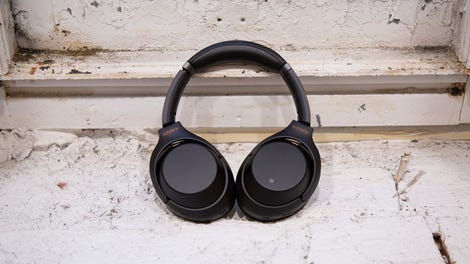
Sony MH-1000XM3
WHAT IS IT?
Wireless noise-canceling headphones
PRICE
$350
LIKE
Best-in-class noise canceling, very comfy
NO LIKE
Struggles with connecting to multiple devices
Put simply, Sony is taking another big gulp of Bose’s milkshake. Nearly a year ago, I declared that Sony’s noise-cancelling headphones had bested the long-standing category leader: the QuietComfort 35 II wireless headphones. The latest iteration of those Sony headphones is the WH-1000XM3. (The last ones were called the WH-1000XM2, so you see, there is a little bit of rhyme and reason to Sony’s model naming scheme.) Sony never told me that it wanted to make a better version of Bose’s headphones, but after spending two weeks using the new model, it’s obvious that Sony does keep giving people more good reasons not to buy Bose.
Let’s start with the adaptive noise-cancelling technology. For the third generation 1000X wireless headphones, Sony built something called “HD Noise Canceling Processor QN1.” Unlike previous models which integrated noise cancelling into the audio processor, this separate processor works on its own to identify and filter out more background noise than before. Through an app, you can also choose to let some of that noise back in. Say you’re in an airport and want to hear the flight announcements but keep the rest of the sound garbage away. The new QN1 chip is designed to do that better.

Photo: Adam Clark Estes (Gizmodo)
When it comes to headphones like these, I’m primarily interested in getting rid of all the noise. And while I struggle to put an exact number on the improvement, I can definitively say that the third generation Sony 1000X headphones block more noise than their predecessors, which were already better blockers than the Bose QuietComfort II headphones. The improvement makes me think of the second generation Sony headphones as a drippy faucet, and the new ones turn it off altogether.
While I wasn’t able to test the new 1000X headphones on a plane, my testing ground was the equally loud and unpleasant New York City subway. The old Sony headphones, which I used on countless commutes between Brooklyn and Manhattan, succeeded just fine at silencing conversations happening nearby me on the subway car. But I was pleased to see how the new Sony headphones actually reduced the roar of an oncoming train to a gentle hum that didn’t distract me from my music or keep me from comprehending whatever a podcast was telling me about the history of the Hun empire or whatever. Adjusting the noise-cancelling settings in the Sony Headphones app worked fine to let in more ambient noise, but like I said before, I just want my noise-cancelling headphones to cancel as much noise as possible. The third generation 1000X will now be my go-to shut-up-the-world headphones.

The second generation Sony 1000X headphones (left) have smaller ear cups and less cushioning on the headband than the new, third generation 1000X headphones (right).
Photo: Adam Clark Estes (Gizmodo)
The other big improvement with the new Sony headphones involves comfort. In addition to cancelling more noise, the WH-1000XM3 headset is designed to be more comfortable. Sony did this by implementing a new design for the headband as well as new ear cups that are roomier than their predecessors. The new headband adds a nice cushion for the top of your skull and a sleeker design that puts less space between the headphones and your head. And at 8.99 ounces, the third generation headphones are lighter than the previous generation, which weigh in at 9.7 ounces.
All of this adds up to a pretty damn comfortable set of headphones. While I liked the design of the earlier 1000X models, they did feel clunky compared to, say, the lightweight and pillowy Bose QuietComfort 35 II headset. The third generation 1000X headphones appear to borrow from some of the Bose comfort perks, namely that cushy headband and the bigger ear cups. When wearing the Sony WH-1000xM3 for hours at a time, I’d almost forget they were there. There was no ache on the top of my head, and I experienced very little squished ear syndrome. Despite the lighter weight, the third generation Sony headphones still felt sturdy, too. I always thought the Bose QuietComfort 35 II headset felt a little bit flimsy.
On top of better noise cancelling and comfort, the new Sony headphones come with a couple of minor but notable upgrades. The material on the outside of the ear cup loses the rough, gravelly texture of the previous generation and gains an almost silky feel. This means that the swipe gestures you can use to increase the volume or skip a track work more effortlessly. (As I noted in my last review, the swiping stuff was difficult on the older headphones.) Sony has also shifted from a single microphone for making phone calls to a microphone array. This means that my mom complains less about how I sound when I call her while using the headphones. And since most microphones on headphones stink, the fact that Sony put the extra effort into making these work better seems nice. Sony also improved the button design, so that they’re easier to push, which I also appreciate.

Photo: Adam Clark Estes (Gizmodo)
Sound quality on the third generation 1000X headphones remains the same as the previous generation. They sound as good as they ever did! But Sony decided not to add any big audio quality upgrades to the headphones this year. The WH-1000XM3 can still pump out deep bass, like the low thumps on “Doing It Right” by Daft Punk or the thundery pulses on “Oi-1" by Biosphere. The high guitar notes on “Solsbury Hill” by Peter Gabriel sound dreamy, natural, and clear. Diane Krall’s voice sounds rich and detailed on “Peel Me a Grape,” but you can still hear the full range of notes from the band. These headphones might not please audiophiles who prefer open-backed, planar headphones. They’ll almost definitely please everybody else, though.
So that’s a lot of good things I have to say about these consistently excellent Sony headphones. The one bad thing I need to bring up is connectivity. Like the Sony models before it, these wireless headphones connect very easily to one device, but if you’re switching between multiple devices, the Bluetooth connection gets very stubborn. The headphones only seem to want to connect to one thing at a time. For example, if I’m using the headphones with my laptop and switch to my phone, the 1000X headphones typically will not connect to my phone unless I disconnect them from my laptop. This is even true when I close my laptop and walk out the door with it in my backpack. I won’t be able to connect to the headphones with my phone because they’re still connected to the laptop. Very annoying! It’s not a dealbreaker, as every set of wireless headphones I’ve used has its quirks. But it’s not ideal.
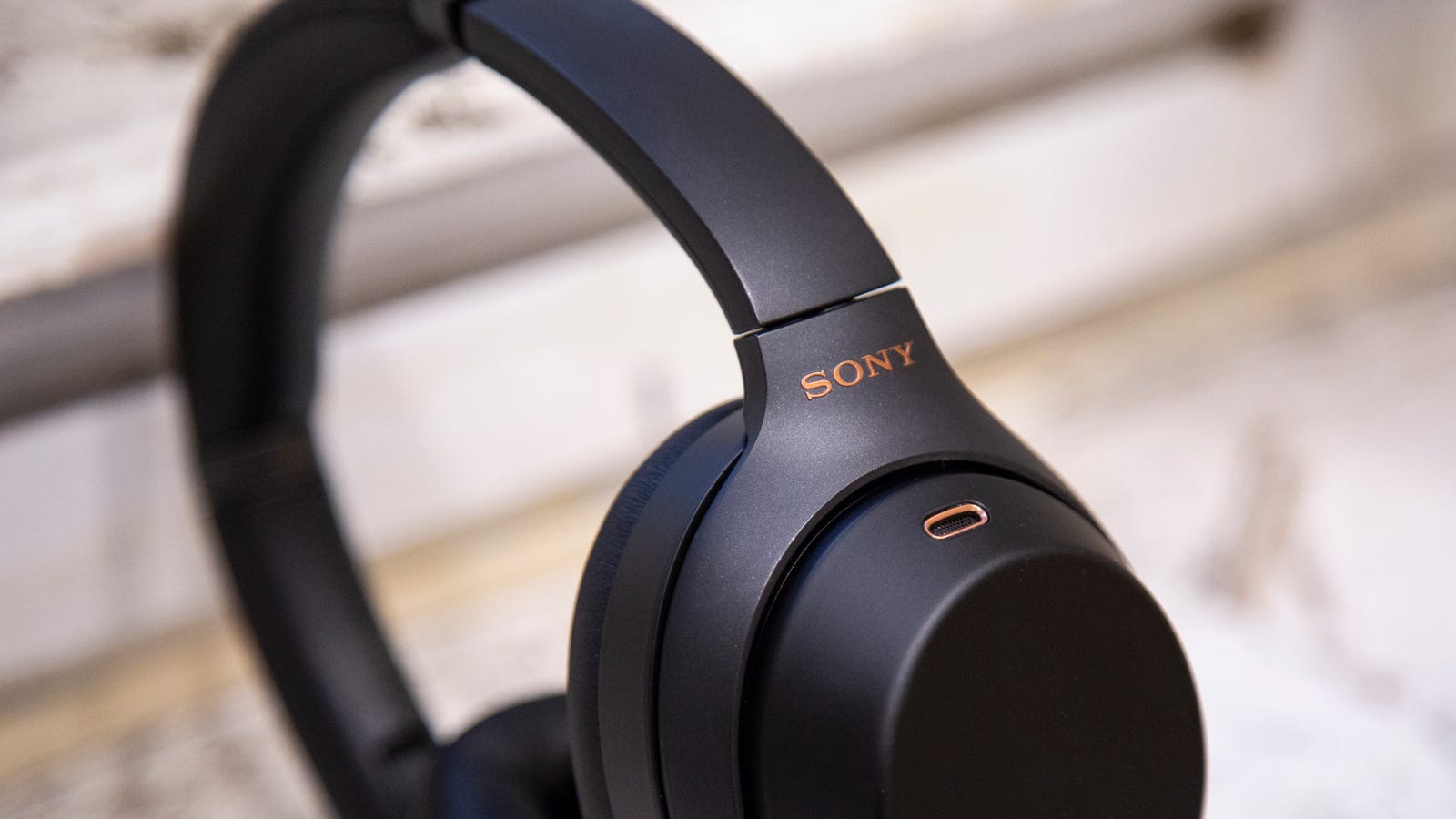
Florence Loses Speed, Now Crawling Inland as Historic Rainfall Continues [Updating]
Thursday 2:22pm
Then there’s the price point. It’s not so much that it’s too high. It’s that I wish it were lower. The WH-1000XM3 cost $350. That doesn’t make them the most expensive headphones in its class, but I don’t think I’d describe them as affordable, either. They are, however, the same price as the two-year-old Bose QuietComfort 35 II headphones, and they’re also better. You could even say they’re doubly better, since even the second generation 1000X headphones bested the Bose when they came out a year ago. You can buy the WH-1000XM2 headphones for $300 now, by the way.
They might not be affordable for everyone, but I do think the Sony WH-1000XM3 are some of the best headphones you can buy. It’s a boon that they also happen to be some of the best (if not the best) noise-cancelling headphones you can buy. Then again, they had the huge advantage of building on the excellent second and first generation 1000X headphones. If you own the WH-1000XM2, I’m not sure the improvements quite warrant an upgrade. But if you’re really craving better noise cancelling and better comfort, the third generation 1000X headphones deliver.
Your move, Bose.
READ ME
- Just like our favorite noise-cancelling except they cancel more noise
- New comfort features makes it feel like you’re wearing nothing at all
- Great audio, although there aren’t any improvements from the last generation
- Cost $350 but so do the Bose headphones, which also aren’t as good
- Wireless connection can be a little tricky
View
(
0) liked
(
0) commented
After you login, you can see the comments and like the post. Login
소니 「WH-1000XM3」 개발자 인터뷰. 새로운 전용 칩 「QN1」으로 음질・NC 성능이 대폭 향상
(0) - (0)
Sony WH-1000XM3 - 2018.09.19
Sony WH-1000XM3
View
View AMP
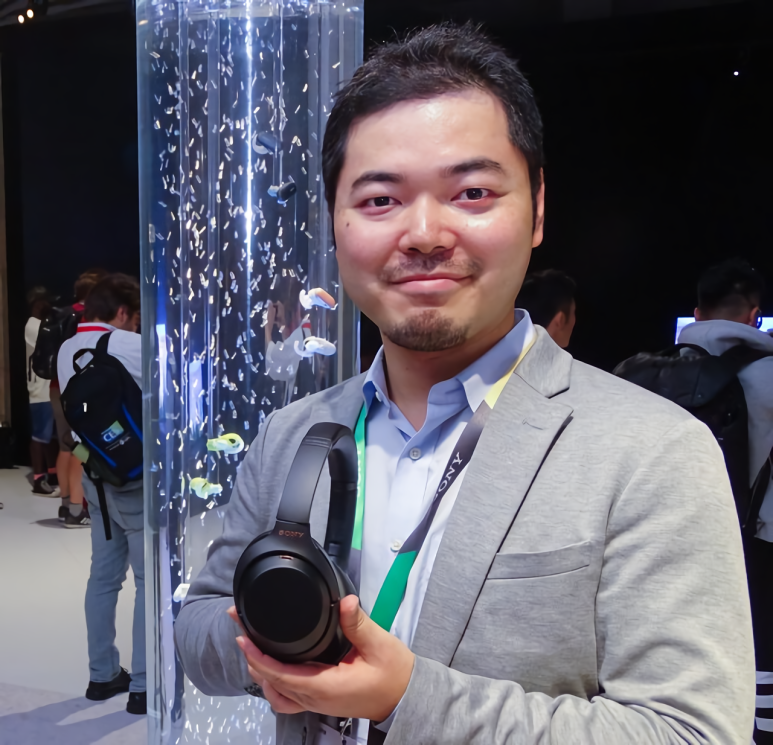
소니 비디오 & 사운드 프로덕트 (주) V&S 사업부 기획브랜딩부문 상품기획부 모바일상품기획1과 오오바 히로시 (大庭寛)
소니가 인기의 노이즈캔슬링 기능을 탑재한 와이아레스 헤드폰, “1000X 시리즈”의 최신세대에 해당하는 모델 「WH-1000XM3」를 IFA에서 발표했다. 유로파에서의 판매 가격은 380유로 (48,500엔 전후) 로, 9월부터 유럽 각지역에서 순차 발매된다. 칼라 바리에이션은 블랙과 프라치나 실버의 2색. 동시리즈는, 2016년에 발표된, 소니 독자의 오디오 그레이드에 고집하는 고품위의 액티브 노이즈캔슬링에, Bluetooth에 따른 와이아레스 리스닝의 성능을 통합한 “전부 들어간” 헤드폰 「MDR-1000X」 의 직계에 해당하는 최신 모델이다.
작년의 IFA에서는 모바일 앱에 대응하여 크게 진화를 이룬 「WH-1000XM2」가 발표되어, 화제를 불렀다. 그 기억도 아직 새로운 가운데, 신세대의 모델이 발표된 것으로, 1년의 페이스로 업데이트가 이뤄진 모양으로 된다. 금회, IFA의 회장에서 소니 비디오 & 사운드 프로덕트의 오오바 히로시 (大庭寛) 씨를 찾아가, 최신 모델의 상세를 인터뷰했다.
■ 경량 배터리 셀과 세신 (細身) 의 헤드밴드 채용으로, 20g의 경량화를 실현
WH-1000XM3의 외견은 초대 「MDR-1000X」에서 크게 변하고 있지 않지만, 매일 MDR-1000X를 사용하고 있는 필자는, 본체를 손에 잡아보면 상당히 가벼워진것이 느낄수 있었다. 작년 발매의 1000XM2보다도 질량이 20g이나 가볍게 되어, 약 255g으로 되고 있다. 경량화가 실현될수 있었던 이유에 대해서는 「신개발의 경량 배터리 셀을 올린 것과, 세신의 헤드밴드에 바꾼 것이 크게 기여하고 있습니다. 내부의 미세한 파츠도 소형경량화를 추구하고 있습니다」 라고 오오바씨는 설명하고 있다.
지금까지의 1000X 시리즈의 헤드폰과 동사양으로, 우측 이어컵의 서피스는 터치 센서 리모콘으로 되고 있다. WH-1000XM3에서는 표면을 부드러운 매트 시아게에 변경. 그리고 블랙 모델에는 힌지 부분에 있는 소니의 로고 마크 등에 코퍼의 원포인트 칼라를 입히고, 프라치나 실버 모델은 골드의 원포인트로 하고 있다.
■ 신개발의 노이즈캔슬링 프로세서 「QN1」을 탑재, 처리 능력이 약 4배로
초대의 MDR-1000X에서 평가가 높았던 액티브 노이즈캔슬링 기능은, 소니가 본기를 위해 독자 개발한 고음질 노이즈캔슬링 프로세서 「QN1」을 탑재한 것에 따라, 그 효과가 보다 플래쉬 업되고 있다. 전모델의 WH-1000XM2에도 노이즈캔슬링 처리를 위해 전용 프로세서는 탑재되어졌지만, 최신 모델에는 그 처리 능력이 약 4배로 업되고 있다. “업계 최고 클래스”를 강조해온 노이즈캔슬링 성능이, 더욱 높은 곳에 도달한 것이다.
또한, 종래에는 외장으로 있던 풀 디지털 앰프 「S-Master HX」의 IC칩에 합쳐져있던 DAC와 앰프의 기능을, 금회에는 노이즈캔슬링 프로세서의 QN1에 전용의 DAC와 아나로그 헤드폰 앰프를 통합. 이것에 따라 S/N이 향상되고, 불요한 소리의 왜곡을 줄여 충실한 원음의 재현성을 다듬었다. 또한 구동시의 소비전력을 낮추는 효과도 있다.
금회 전용 칩 「QN1」의 개발에까지 고집한 이유에 대해서, 오오바씨는 다음과 같이 말하고 있다.
「작년에 발매한 “업계 최고 클래스의 노이즈캔슬링 성능”을 말하는 WH-1000XM2를 개발할 때, MDR-1000X에서 내부구조나 하우징의 형태 변경 등, 하드웨어에 따른 성능 향상은 할수있는 전부를 했습니다. 그렇기 때문에, M3에서 보다 한층의 비약을 실현하기 위해서는, 드디어 프로세서에 손을 넣는 것이 필요했습니다. 노이즈캔슬링의 사용 방법에 대해서도, 사람의 말하는 목소리 등 다양한 데일리 노이즈의 소음 (消音) 성능에 대해서, 아직 높일수 있잖아라는 반응이 우리에게도 있었습니다. 디지털 노이즈캔슬링의 정밀도를 높이기 위해서도 프로세서의 처리 스피드를 높일 필요가 있어, 금회 신규로 QN1을 개발한다는 선택에 도달하게 되었습니다.」
「QN1」 이라는 알파벳과 숫자의 조합에는 무언가의 의미가 있을 것인가. 소니로서 특별한 의도를 가진 이름은 아니라고 하지만, 아무래도 「Quality of Noise cancelling」을 의미하는 것인지도 모른다. 「종래의 1000X 시리즈에서도 추구해온 효과를 보다 파고든 결과, 모든 저역에서 동등하게 자연스러운 소음 효과를 실현한 것이 큰 변경점입니다」 라고 말하는 오오바씨의 설명을 듣고, 다시 한번 그 효과를 IFA의 회장에 전시된 실기로 시험해보았다.
확실히 종래의 노이즈캔슬링 헤드폰이 추구해온 고음역・저음역의 노이즈를 소음하는 것뿐만 아니라, 사람의 말하는 목소리나 홀내에서 소용돌이치는 북적거림이 효과적으로 소음되어, 자연스럽게 기분 좋은 정숙함에 빠질수 있었다. 노이즈캔슬링의 온과 오프를 스위치한 때의 변화도, 실로 위화감없이 느껴졌다.
■ NC 기능 & DSEE HX의 업 컨버트 기능 등 「좋은 소리의 체험」 이 성공의 열쇠
노이즈캔슬링용의 마이크 자체에는 M2에서 큰 변화는 없어보인다. 액티브 노이즈캔슬링의 사양에 대해서는, 좌우 이어컵의 표측과 내측에 하나씩, 합계 4기의 마이크로 노이즈를 모아 소거하는 「듀얼 노이즈캔슬링 테크놀로지」 를 답습한다. 스마트폰 앱 「Sony Headphones Connect」에 따라, 장착 상태나 리스닝 환경의 대기압의 상태에 맞춰 들리는 것을 최적화하는 「NC 옵티마이저」도 지금까지대로 간단하게 사용할수 있다. 와이아레스 재생시에는 고품위의 하이레조 상당의 리스닝을 실현하는 LDAC와 aptX-HD에 대응. LDAC나 aptX-HD 비대응의 기기에 연결하여 와이아레스 재생을 즐기는 경우에는, 소니 독자의 업 컨버트 기능 「DSEE HX」가 효과적으로, 96kHz/24bit 상당의 음질에 끌어올리는 것이 가능하다.
오오바씨는 「일본 국내나 아시아에서는 헤드폰의 하이레조 대응, 혹은 하이레조 상당의 와이아레스 재생이라는 퀄리티를 소구하는 형태의 커뮤니케이션이 성공하여, 많은 팬에서 지지를 얻을수 있었습니다」 라고 말한다. 물론 구미에서 본기가 성공하고 있는 큰 이유도 「음질」 이 인정받고 있기 때문인것에 있고, 노이즈캔슬링이나 DSEE HX에 따른 하이레조 상당의 업 컨버트 기능을 포함한 「좋은 소리의 체험」 이 팬의 하트를 잡고 있는것 같다. 노이즈캔슬링용의 마이크를 활용하여, 음악 리스닝 중에 외부의 환경음을 가져오는 「앰비언트 사운드 모드」 도 이어서 탑재하고 있다. 모드는 「노말」 과 「보이스」 의 2종류를 앱에서 선택할수 있다.
우측 이어컵의 터치 센서 콘트롤러를 쓰다듬으면, 일시적으로 외음 (外音)을 가져오는 「퀵 어텐션」 도 초대기부터 호평을 받는 기능의 하나다. 통화시의 목소리를 보다 명확하게 픽업할수 있도록, 종래는 노이즈캔슬링과 겸용하고 있던 마이크의 사용을 변경. 좌측 하우징의 화측에 통화 전용의 마이크를 새롭게 탑재했다. WH-1000XM2와 동사양으로, Google 어시스턴트 연계는 헤드폰에 빌트인하는 형태로 대응. 다만, 구주나 미국 등에서는 9월부터 대응을 예정하고 있지만, 일본 국내에서의 대응 시기를 미정이라는 것.
Android/iOS 대응의 모바일 앱 「Sony Headphones Connect」와의 조합에서는, 스마트폰측의 가속도 센서로 유저의 리스닝 신을 판변하여 리드 아웃. 행동에 대응하여 노이즈캔슬링의 강도와 외음의 유입 레벨을 자동으로 최적화하는 「어댑티브 사운드 콘트롤」도 계승되었다. 각 신은, 멈춰있는때 / 걷고있는때 / 탈것에 타고있는때로 분류. 신마다의 컨디션을 유저가 커스터마이즈하는 것도 가능하다.
헤드폰에 스마트폰 앱, 또는 센서의 기술을 통합한 WH-1000XM2의 도전은 획기적인 것이었지만, 그 어필은 유저에게 제대로 닿아서, 실제로 이용되고 있는 것인가. 오오바씨에 따르면, 어댑티브 사운드 콘트롤은 역시 도시부의 유저를 중심으로 이용되고 있다고 한다. 유저에서 받고 있는 피드백의 중에서는, 예를 들면 센서의 감도에 의존하는 부분도 있는 기능이기 때문에, 역간이 짧은 전차에 타면서 사용하면, 자동적으로 인식되는 모드 체인지가 빈번하게 반복되어버리는 경우도 있어, 그것을 개선하기를 바란다는 목소리도 받고 있다고 한다는 것. 오오바씨는 금후도 유저의 목소리에 귀를 기울이면서, “참견이 되지않는 센서를 살린 기능”으로서 완성도를 높여가고 싶다고 했다. 애플리케이션에는 이외에도, 이퀄라이저와 서라운드 효과 (VPT), 음악이 들리는 방향을 바꿀수 있는 사운드 포지션 콘트롤 등의 사운드 이펙트가 계속해서 탑재되어져 있다.
■ 철저한 장착감의 개선, 자연스럽게 핏트하는 슬림한 실루엣의 실현
금회에도 기구설계부문의 개발팀이 아이디어를 내어, 헤드폰의 장착감 개선이 철저하게 행해졌다. 1000X 시리즈의 장착감을 개선하기 바라는 포인트로서, 유저에서는 「이어패드가 귀를 누른다」 나, 착용했을때에 머리가 크게 보여버리는 「실루엣의 슬림화」를 바라는 목소리 등이 전해졌다고 한다. 이어패드에는 1000XM2와 같은 저반발 우레탄 소재를 채용하고 있지만, 내부의 소재를 세밀하게 검토하고 있다. 귀의 주위에 이어패드가 닿는 면적을 늘린 것으로, 압력을 분산하면서 장시간 리스닝시의 장착성을 높였다. 동시에 패시브한 노이즈캔슬링 효과도 향상하는 것도 노렸다.
또한, 드라이버 유닛을 귀의 각도에 따르도록 대각선으로 배치하는 「이어 콘셔스 디자인」에 따라 이어컵내의 공간도 넓게한 것으로, 장착성뿐만 아니라, 음장의 입체감을 높이는 효과에도 이어지고 있다. 헤드밴드는 힌지와 두정부의 밴드의 곡률을 변경하는 것으로, 머리의 형태에 보다 핏타리 (ピッタリ) 하게 어울리도록 개선을 도모했다. 이것에 따라 귓가부터 두정부에 필요 이상의 공간이 없이 자연스럽게 핏트하는 실루엣을 실현하고 있다.
■ 2스텝에 따라 간편하게 연결 설정이 가능한 「간단 페어링 기능」
스마트폰과의 페어링을 간편하게 하는, 간단 페어링 기능도 새롭게 더해진 하이라이트다. Android와 iOS의 양플랫폼에 대응. 간단 페어링 기능에서는, 스마트폰에 먼저 「Sony Headphones Connect」 앱을 도입 준비후, 헤드폰의 전원을 넣으면 앱이 헤드폰의 BLE 비콘 정보를 자동으로 캐치한다. 이어서 스마트폰의 화면에 표시되는 헤드폰의 이미지 화면을 탭하는 것으로, 페어링이 완료된다.
오오바씨는 「NFC를 아직 모르는 쪽도 있고, 통상의 Bluetooth 설정에서의 페어링의 난해함에 납득할수 없는 쪽도 아직 많이 계십니다. 소니로서, 와이아레스 헤드폰・이어폰의 페어링을 간편하게 하는 새로운 인터페이스를 내세우고 싶다고 생각해서, 금회의 신제품 M3부터 처음으로 도입을 결정했습니다.」 라고 배경을 말하고 있다. 체험해보면 확실히 편리한 기능으로, 금후 소니의 와이아레스 오디오 제품에 넓게 채용되는 것을 기대하고 싶다고 생각한다.
■ 급속 충전도 파워 업. 10분의 충전으로 약 5시간의 재생이 가능하도록
내장 배터리는 약 3시간으로 풀충전으로 되어, 본기부터 충전 케이블이 USB Type-C에 변경되고 있다. 1.5A 이상의 충전전류 용량을 가진 챠져를 사용하면, 10분의 충전으로 약 5시간분의 급속 충전이 가능하게 되었다. 1000XM2에서는 10분의 충전으로 약 70분의 재생 시간이었기 때문에, 이것은 큰 비약을 이룬 기능이라고 말할수 있다. 최신의 스마트폰에 동봉되는 총전기도 대체로 1.5A 이상의 충전 퍼포먼스를 갖추고 있는 것으로, 조합에 곤란하게 되는 것은 아닐것이다.
WH-1000XM3는 풀충전에서 약 30시간의 연결음악재생에 대응하는 터프한 배터리 성능을 실현하고 있다. 그런만큼, 방심하고 있다가 음악을 듣고 싶은 때에 배터리가 얼마 남지 않게 되었다. 라는 것도 생각할수 있다. 그런 때야말로 급속 충전 기능이 있다면 안심. 금후도 아웃도어 유스가 중심으로 되는 프리미엄 클래스의 헤드폰에는, 스탠다드한 기능의 하나로 될것 같다.
인기의 1000X 시리즈의 새로운 헤드폰 「WH-1000XM3」는, 외형의 변화는 온건하면서, 음질이나 노이즈캔슬링의 성능은 또한 한층 높은 레벨의 비약을 이루고 있다. 새로운 기능도 오래 사용하면 진가를 느낄수 있는 것들 뿐이다. 일본에서 언제쯤 발매되는 것인가. WH-1000XM2와 비교하면서 실력을 시험하는 날이 몹시 기다려져온다.
[출처] <IFA>소니 「WH-1000XM3」 개발자 인터뷰. 새로운 전용 칩 「QN1」으로 음질・NC 성능이 대폭 향상|작성자 마키세 크리스
View
(
0) liked
(
0) commented
After you login, you can see the comments and like the post. Login
SAMSUNG GALAXY TAB S4 REVIEW: VALIANT EFFORT
(0) - (0)
Samsung Galaxy Tab s4 | 갤럭시 탭 s4 - 2018.09.19
#samsung
#galaxy tab s4
Samsung Galaxy Tab s4 | 갤럭시 탭 s4
View
View AMP
What is an Android tablet with a keyboard, mouse, and pen? Well, it’s still an Android tablet. The Galaxy Tab S4 is the new flagship 10.5-inch tablet that Samsung is aiming toward people who want a device that’s lighter than an ultrabook but still has a keyboard and pen.
Samsung has done everything it can to transform the Galaxy Tab S4 into a “real” computer, even though it still runs Android 8.1. That strategy revolves around giving the Tab S4 a desktop-style environment with individual windows and improved multitasking called Samsung DeX.
THE TAB S4’S EXECUTION IS LAYERED
But turning an Android tablet into a hybrid doesn’t come cheap — at least not by usual Android tablet standards. Pricing for the Wi-Fi version of the Tab S4 starts at $649, which includes the S Pen. However, the keyboard is an additional $149. That makes a complete setup $800, which is $10 less than a 10.5-inch iPad Pro with Apple’s Smart Keyboard (minus the Apple Pencil).
You can also link a Bluetooth mouse if you already have one to complete the DeX experience. (And, as you’ll see, you kind of need to.)
Aesthetically, the Galaxy Tab S4 is a good example of straightforward industrial design for a tablet. It measures 7.1mm thin and weighs 482 grams (1.06 pounds) so it definitely passes as lightweight. It has a glass back and front, comes in white or black, and is well-balanced, no matter how you pick it up.
Since it’s mostly glass, the Tab S4 is a fingerprint magnet of the highest order. Once I wiped it off a few times, I realized Samsung still deserves credit: it’s a unique and good-looking tablet without excessive branding.
:no_upscale()/cdn.vox-cdn.com/uploads/chorus_asset/file/11933411/setienne_180806_2797_1435.jpg)
:no_upscale()/cdn.vox-cdn.com/uploads/chorus_asset/file/11933401/setienne_180806_2797_1404.jpg)
:no_upscale()/cdn.vox-cdn.com/uploads/chorus_asset/file/11933405/setienne_180806_2797_1406.jpg)
If you take a look around the Tab S4, you’ll notice the gold contacts on the edge of the long side (meant for the keyboard), a volume rocker, power button, microSD card slot, 3.5mm audio jack, and a USB-C fast charging port.
The one major takeaway I have from using the Galaxy Tab S4 hardware is how beautiful the screen is. It’s a 10.5-inch, 2560 x 1600 sAMOLED display. (Yes, Samsung rebrands the tech its displays use.) Brightness can be cranked up to the max, and it still produces an image with tons of contrast and saturation without blacks looking washed out. The crisp image the Tab S4 produces means that it’s highly suitable for photo retouching, drawing doodles, or watching the new season of Luke Cage.
IF YOU’RE INTO HEAVY SATURATION AND CONTRAST ON SCREENS, THIS IS IT
The Tab S4 definitely has one of the best-looking tablet displays of the year, and it’s not just because of Samsung’s use of display tech and color balancing. The bezels on the sides have shrunk compared to last year’s Galaxy Tab, so it’s more visually striking and immersive to look at. However, if you appreciate more color-accurate screens, there’s a chance you might not like the Tab S4’s oversaturated color profile.
:no_upscale()/cdn.vox-cdn.com/uploads/chorus_asset/file/11933407/setienne_180806_2797_1434.jpg)
Samsung Galaxy Tab S4 specs
- 10.5-inch 2560 x 1600 sAMOLED display
- Snapdragon 835 octa-core chipset
- 4GB RAM / 64GB storage / microSD up to 400GB
- 7,300mAh battery
- Android 8.1 with Samsung Dex
- Quad speakers “tuned by AKG”
- 13-megapixel main camera with flash / 8-megapixel front-facing camera
- S Pen
On its own, the Tab S4 is a powerful media-consumption device. But Samsung’s real goal for this tablet is to make it a productivity device. The $149 keyboard doubles as a stand and case for the Tab S4, but you can’t adjust the angle, so it only really works in one position.
On the left side of the keyboard, there’s a removable S Pen holder, but it feels chintzy. It sometimes can accidentally snap off before you have to snap it back on again, and it’s an odd place to cut corners.
Another oddity: there’s no trackpad. So if you really want to take advantage of the DeX desktop mode, you’ll need your own Bluetooth mouse, or you can use the S Pen as a mouse replacement, which is awkward.
EVERYTHING BUT A TRACKPAD
If there’s a bright side, it’s that typing feels decent. It doesn’t have a lot of travel, but it isn’t as shallow as the MacBook Pro’s butterfly keyboard. However, the keys are incredibly small, and despite having young, nimble fingers, I often struggled to hit the backspace key quickly or get used to the even smaller number row. If you want to send dozens of emails with the Tab S4 keyboard every day, you should practice a lot to commit the layout to your muscle memory. Also, the keys aren’t backlit, so using the Tab S4 keyboard at night is a crapshoot.
:no_upscale()/cdn.vox-cdn.com/uploads/chorus_asset/file/11933403/setienne_180806_2797_1409.jpg)
TECHNICALLY, YOU HAVE AN EMOJI BUTTON
One pleasant surprise was Samsung’s decision to include an on-screen keyboard button, which brings up a small version of the native full-screen Android keyboard when you’re in DeX mode. It’s helpful if you want to add emoji, type using your voice, and add GIFs or stickers.
The only included accessory, other than a charger, is the S Pen. This year, it’s been redesigned for the Tab S4. Design-wise, it reminds me of a faux Montblanc pen, but Samsung prefers calling it “refined.” And it is! It’s lightweight, balances in your fingertips like a real pen, and has a soft tip. It tracks very well and reminds me less of the Galaxy Note’s S Pen and more like the Surface Pen, which is often used by artists for professional design work.
:no_upscale()/cdn.vox-cdn.com/uploads/chorus_asset/file/11933399/setienne_180806_2797_1351.jpg) Drawing by Dami Lee / The Verge
Drawing by Dami Lee / The Verge
Our resident talented artist and Circuit Breaker reporter Dami Lee drew a quick doodle and said it “felt better and more natural than an Apple Pencil.” While you can’t flip the pen over to use it as a digital eraser, it does support Samsung’s Air Command features. You can annotate screenshots, write out notes, draw, sign documents, and do pretty much anything else a digital pen is meant for.
THE NEW S PEN IS GREAT FOR ARTISTS
DeX is Samsung’s specialized software for giving Android a desktop interface, with windows, browser tabs, and a taskbar. On the Tab S4, it’s available as just another mode, whereas on Samsung phones, you have to plug into a weird dock to enable it.
Samsung DeX is going to be one of the Tab S4’s biggest selling points and for good reason. It’s amazing what Samsung has accomplished with Android here.
:no_upscale()/cdn.vox-cdn.com/uploads/chorus_asset/file/11933389/setienne_180806_2797_1317.jpg)
You can have a dozen Android apps open at a time in an environment where you can resize them as windows, move them around, go full-screen with just one, or have the option of projecting the whole thing on an external TV / monitor.
IT’S SNAPPY, AND THAT’S GOOD
There’s still a downside: Android apps optimized for tablets are few and far between, and those that do exist definitely haven’t been designed or optimized to run on the Tab S4 in DeX mode.
Performance-wise, I had some concerns about Samsung using an older Snapdragon 835 chipset with only 4GB of RAM, but I haven’t come across crashes or lag at all. Overall performance doesn’t become an issue until you hit a dozen apps running at the same time. At that point, I noticed resizing windows wasn’t as snappy, but the Tab S4 still persisted and didn’t crash.
:no_upscale()/cdn.vox-cdn.com/uploads/chorus_asset/file/11933397/setienne_180806_2797_1376.jpg)
Of course, there are some holes in Samsung’s execution of DeX. For example, you have to reopen all the apps you were working from when you switch between the Android and DeX interface, unless you enable the “DeX Labs” feature, which carries them over (but not always).
There’s also the fact that some Android apps, like Netflix or Pokémon Go, don’t seem to work with DeX. It can’t run them full-screen even if you enable a DeX Labs feature that forces non-supported apps to resize. Still, most Android apps should play nice — hopefully.
SAMSUNG DEX DOESN’T PLAY WELL WITH EVERY APP
The most unusual peripheral for an Android tablet is probably a Bluetooth mouse. DeX makes good use of a mouse because you can right click on apps in the taskbar to close them or otherwise access options that would usually be hidden with a long press. What’s unusual is that a mouse is really necessary to make the most of DeX, which makes the whole thing feel a little less portable.
Is using the Tab S4 in default Android tablet mode worth it? Only if you can’t use the app in DeX mode or if you don’t have a keyboard. Otherwise, there’s really no reason to use it like you would most Android tablets. Screen real estate isn’t utilized as efficiently, so DeX is the only point where the Tab S4’s software really shines.
For those of you wondering about Bixby, Samsung’s often-delayed virtual assistant: it’s delayed. Samsung says Bixby should launch for the Tab S4 next year.
:no_upscale()/cdn.vox-cdn.com/uploads/chorus_asset/file/11933393/setienne_180806_2797_1345.jpg)
The Tab S4 has great cameras on the front and back. (I’ll save what I think about taking pictures on a tablet for another time.) The main 13-megapixel camera can shoot 4K up to 30 fps, while the front-facing supports up to 1080p HD.
On the front, the Tab S4 also houses the sensors for its iris and face scanner unlocking feature. These are hit or miss because the Tab S4 doesn’t always “see” my face if I’m using it with the keyboard and the desk I’m at is too low. However, it does sometimes work in pitch black darkness, so that’s kind of nice.
FACE UNLOCKING IS HIT OR MISS
Most of the Tab S4’s weight comes from the massive 7,300mAh battery. Samsung advertises 16 hours of battery life using the Tab S4 for video and productivity. That’s not far off: I got around 15 hours of use before hitting critical battery levels by binge-watching on Netflix and writing out the occasional Slack message or email with the keyboard. If you use the Tab S4 conservatively (no GPS, Bluetooth, and 50 percent brightness) it shouldn’t be difficult to hit the 16-hour mark.
:no_upscale()/cdn.vox-cdn.com/uploads/chorus_asset/file/11933409/setienne_180806_2797_1437.jpg)
IT’S MISSING THINGS THAT YOU HAVE TO BUY
The Samsung Galaxy Tab S4 is a great effort to make the ideal Android tablet. Samsung DeX makes the Tab S4 truly special, but the lack of optimized apps for Android and DeX modes means your software choices are quite limited. Samsung did a remarkable job of making the Tab S4 seem like it’s more than the sum of its parts. I just wish the parts were better.
View
(
0) liked
(
0) commented
After you login, you can see the comments and like the post. Login